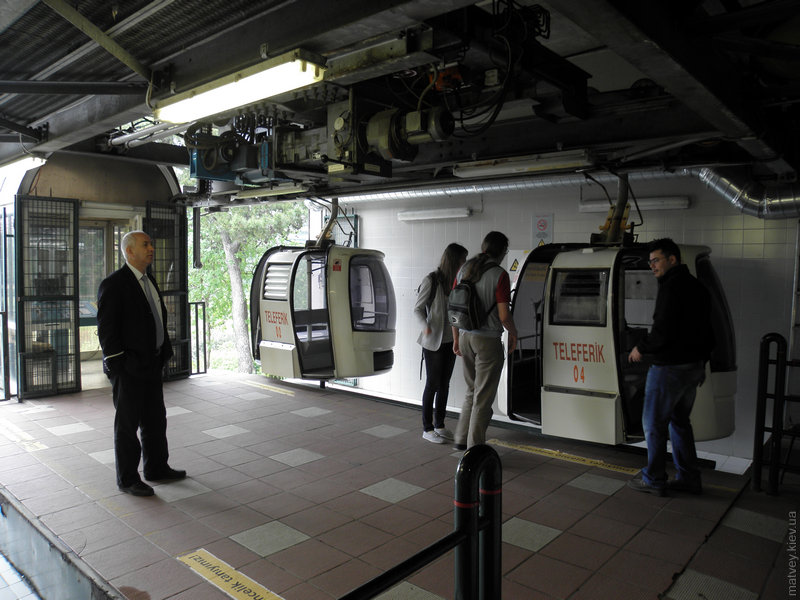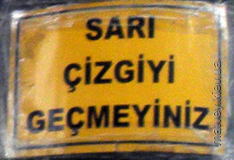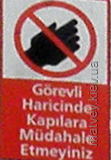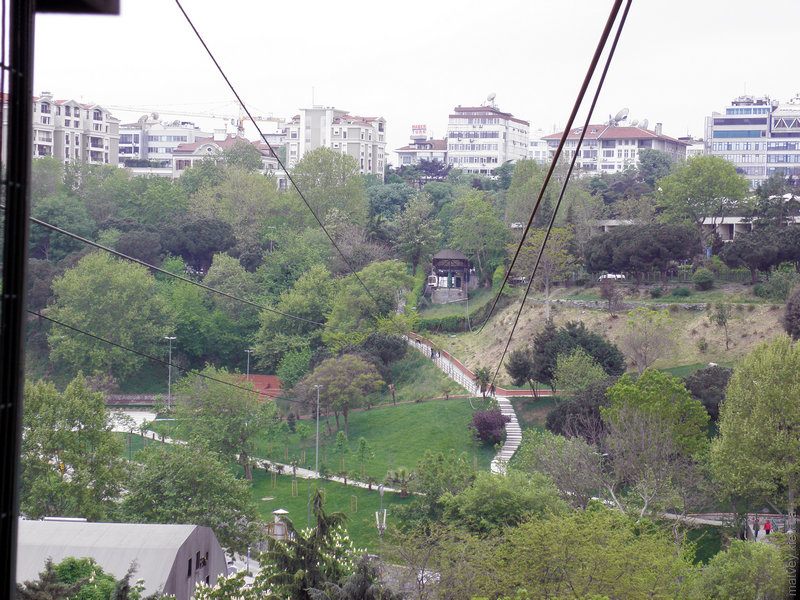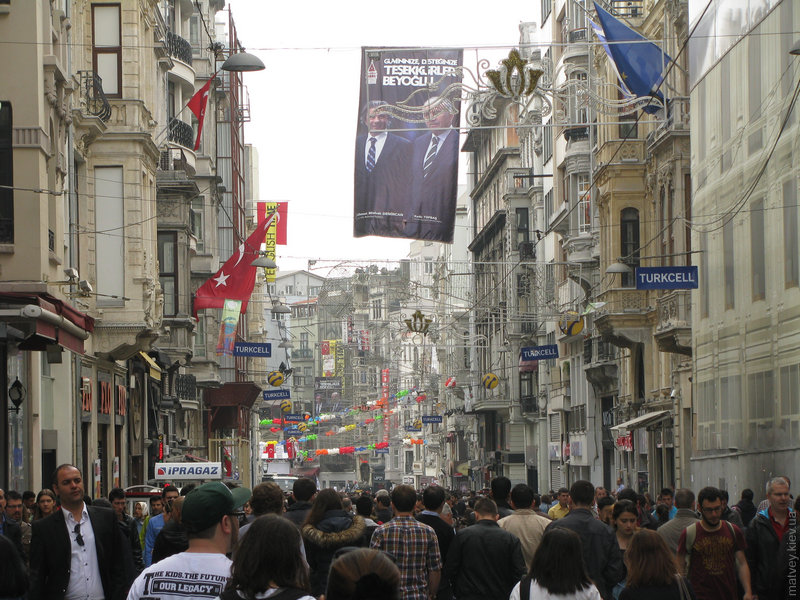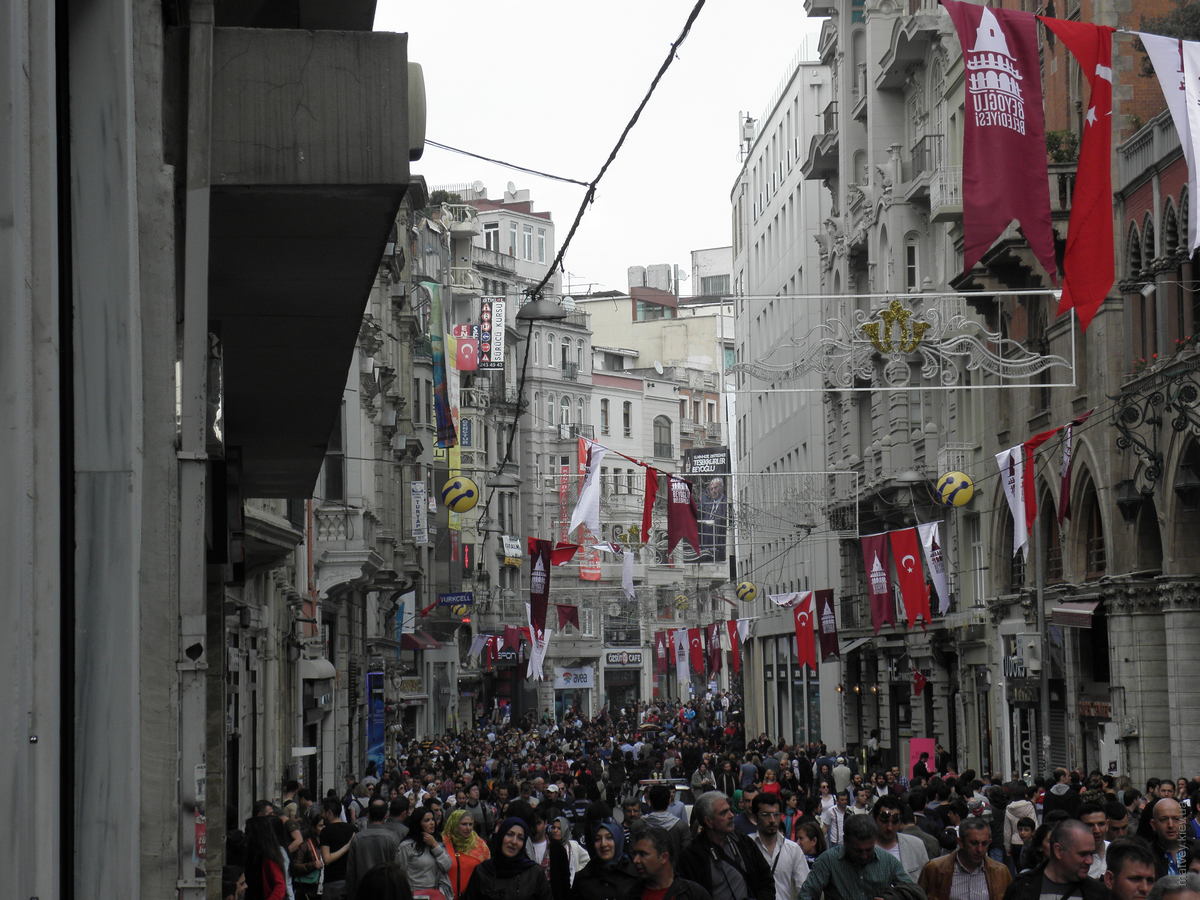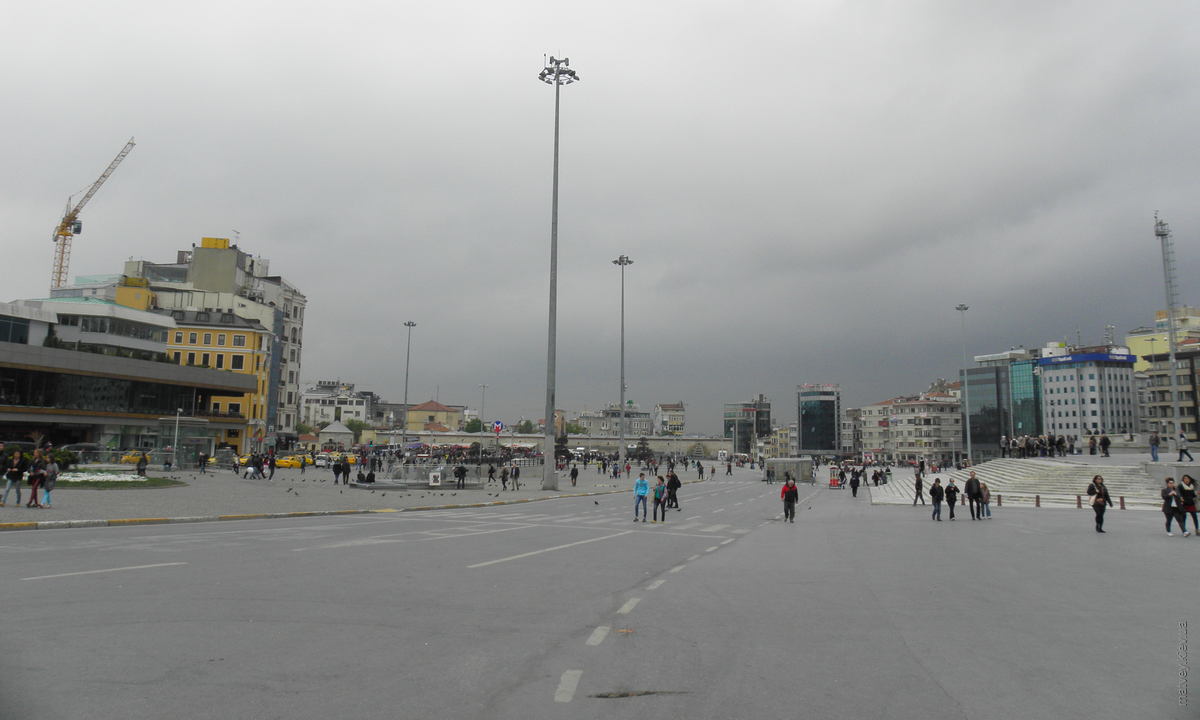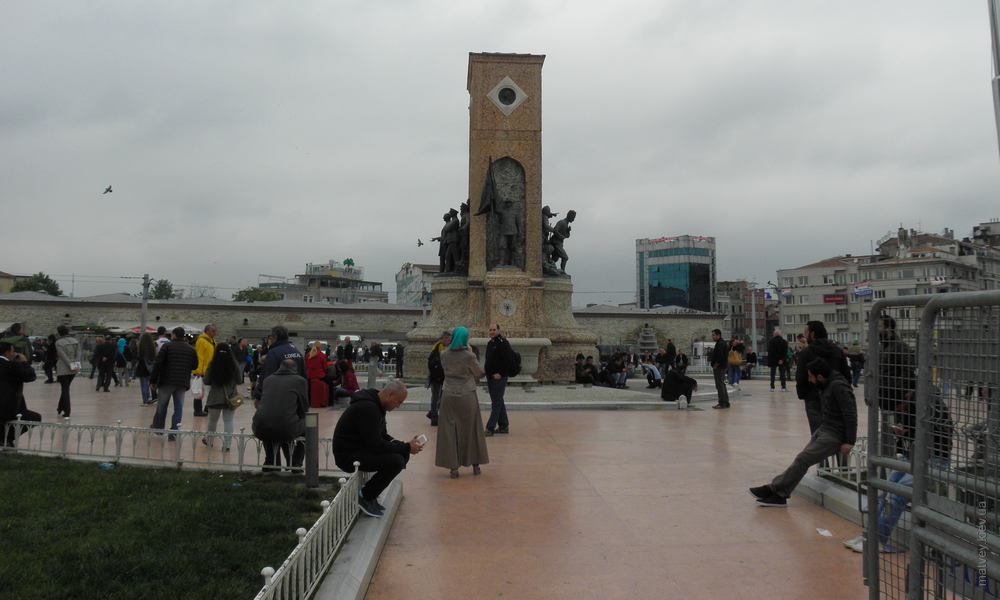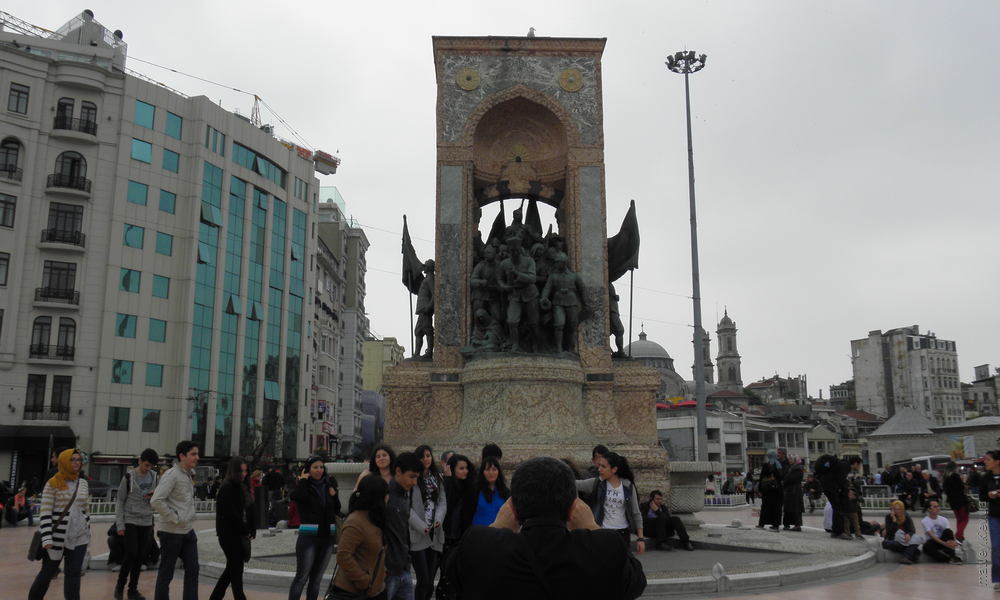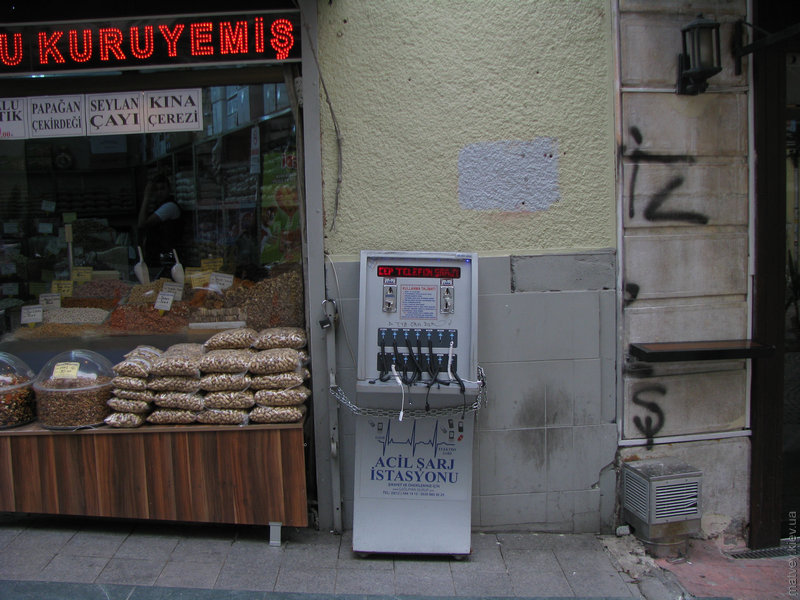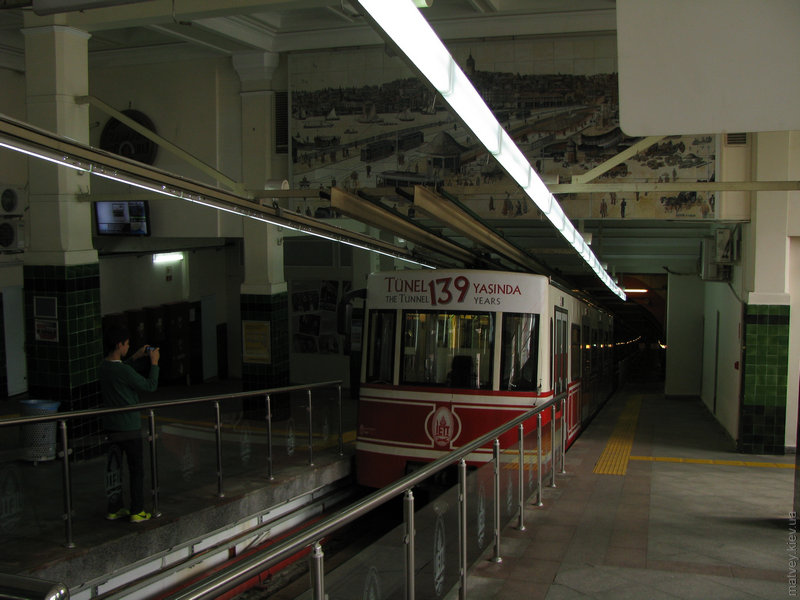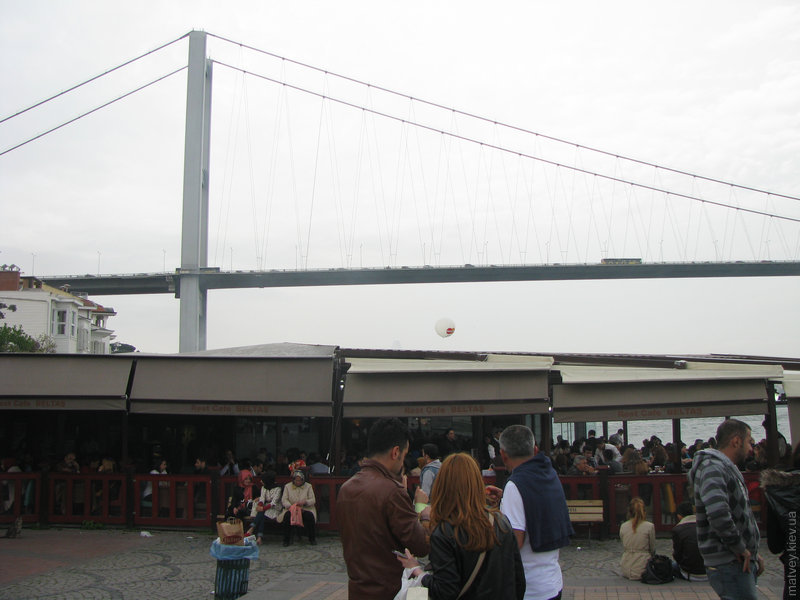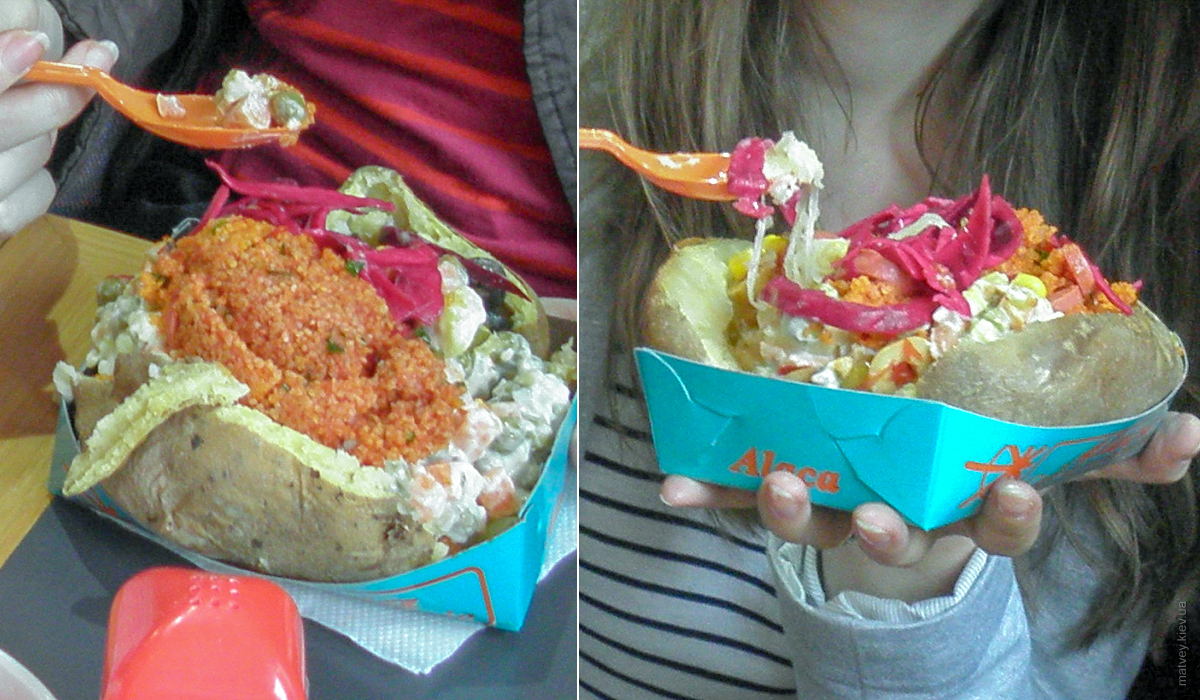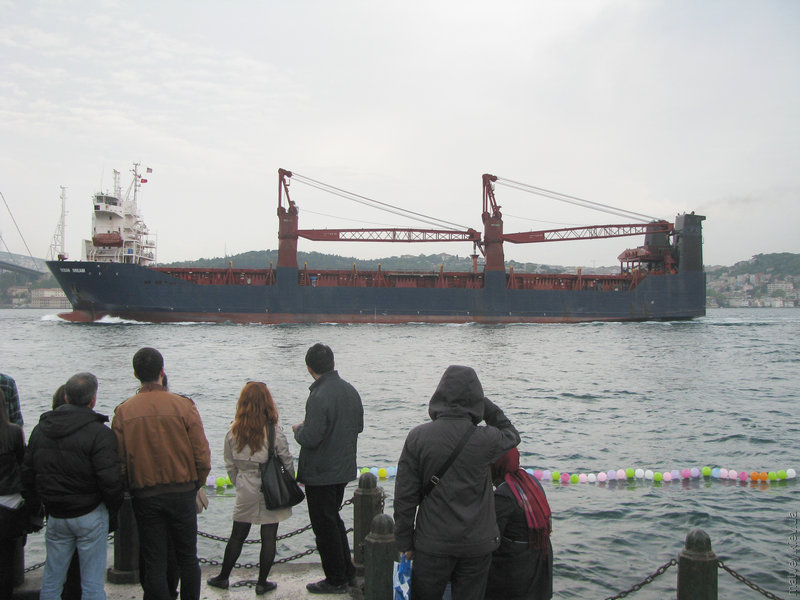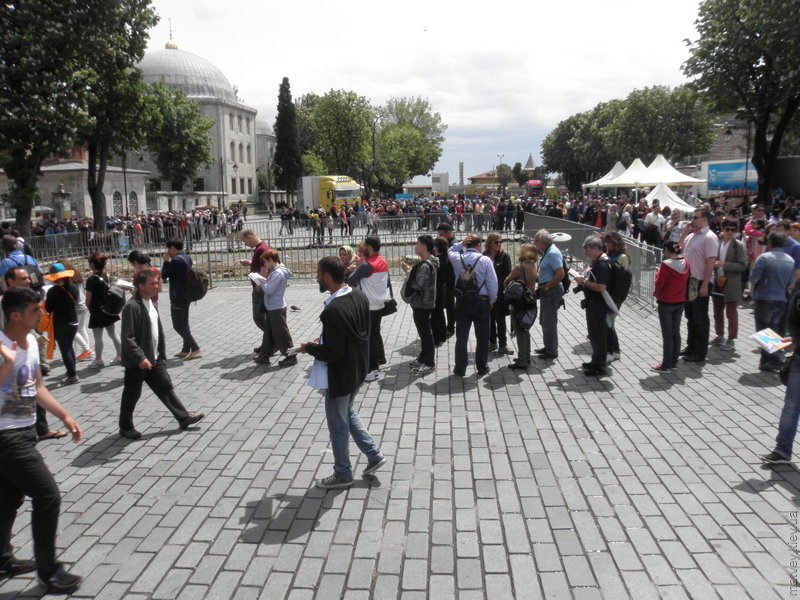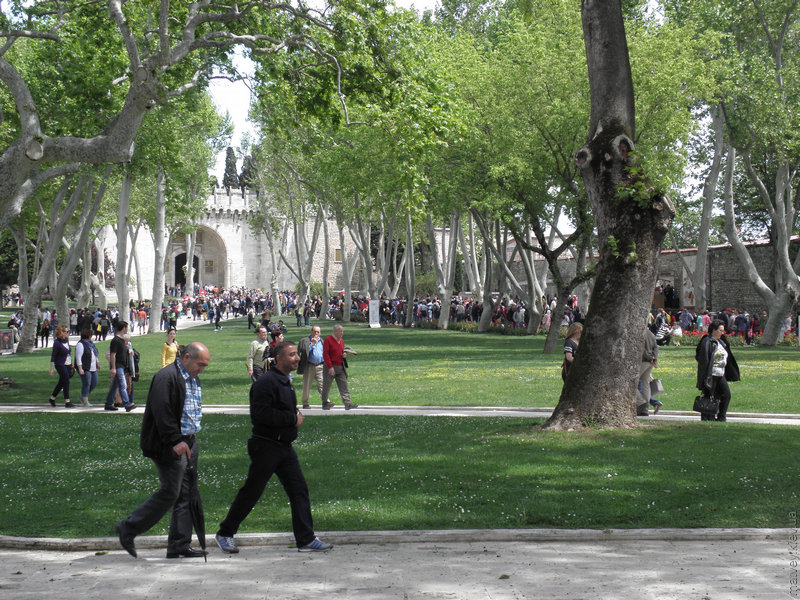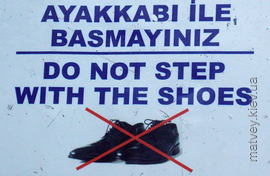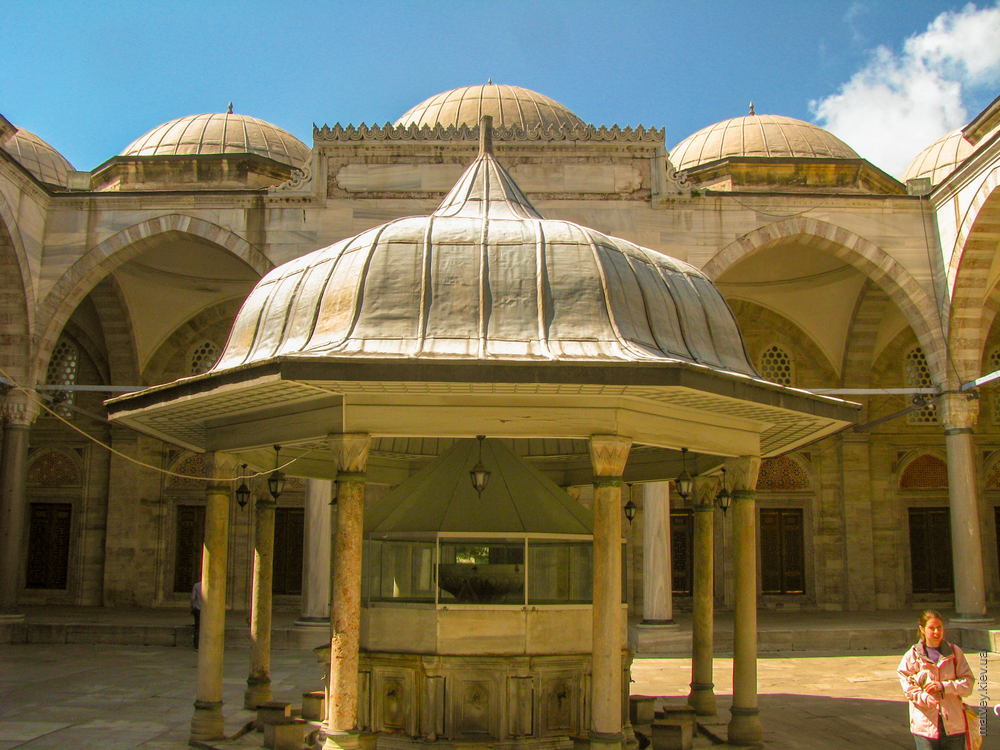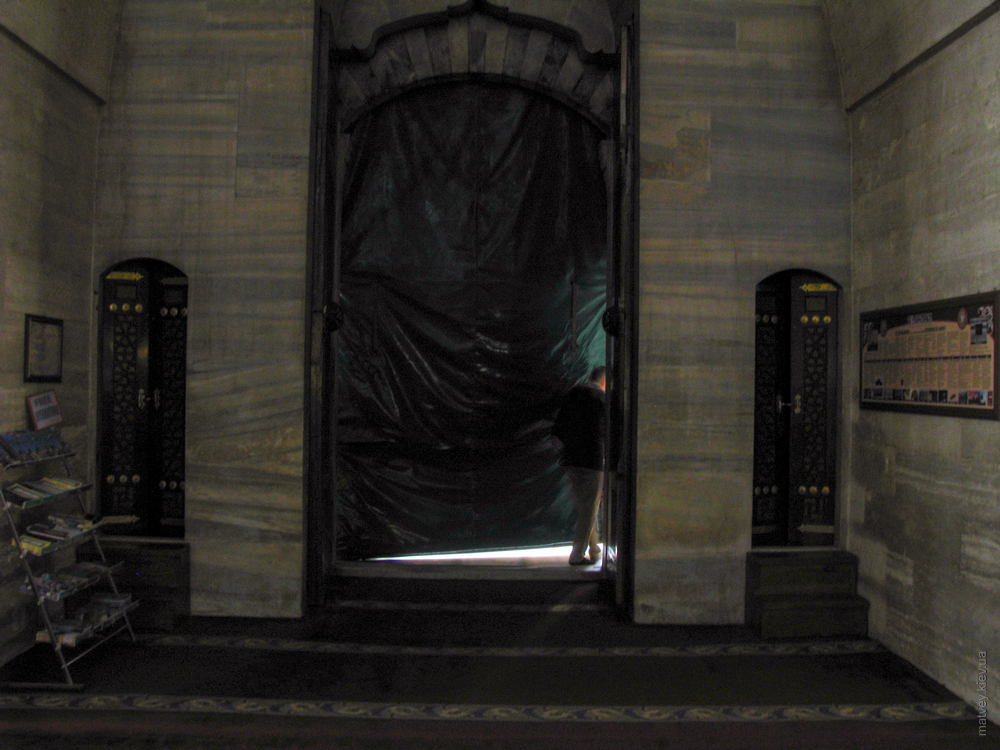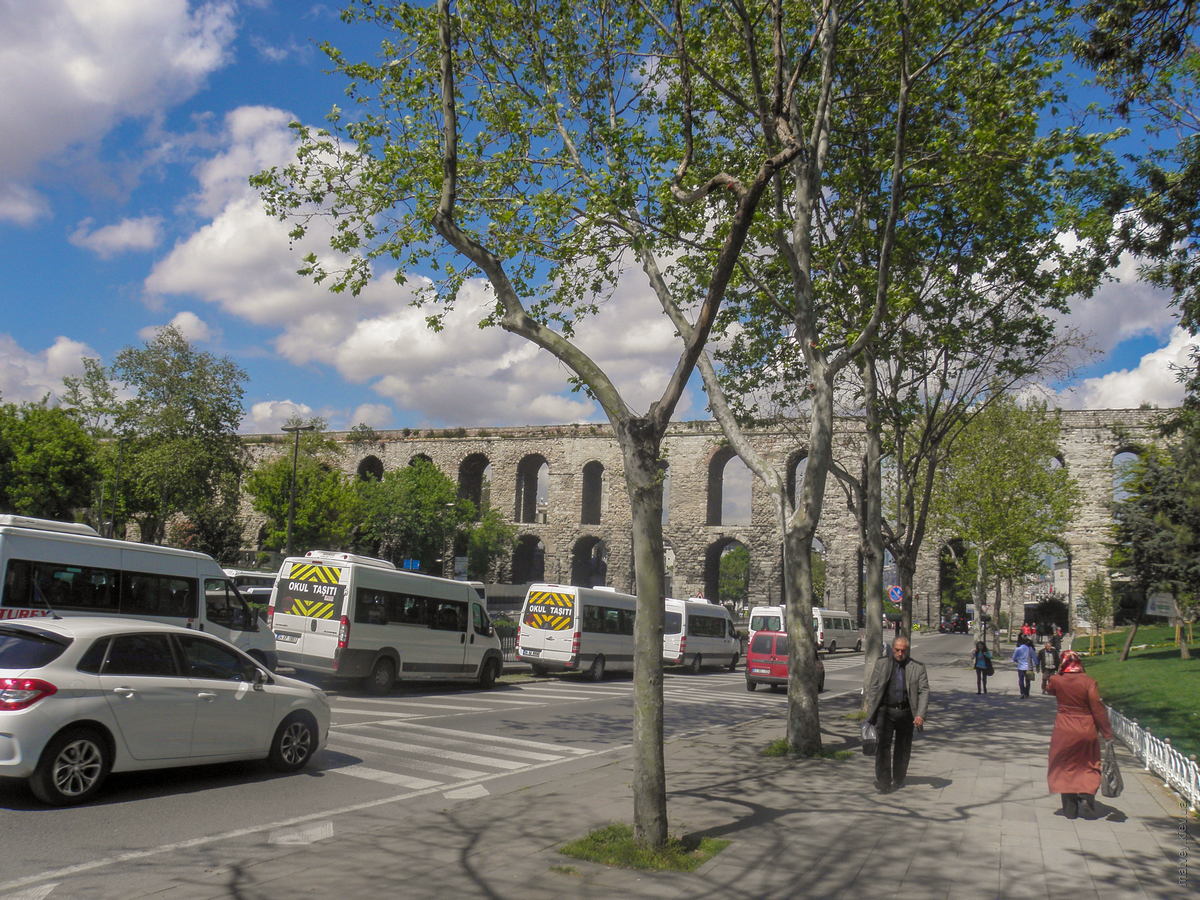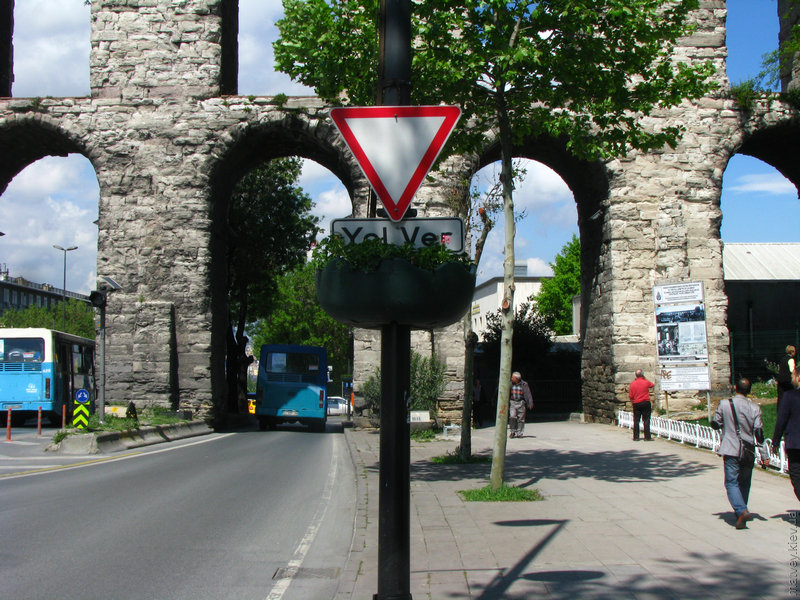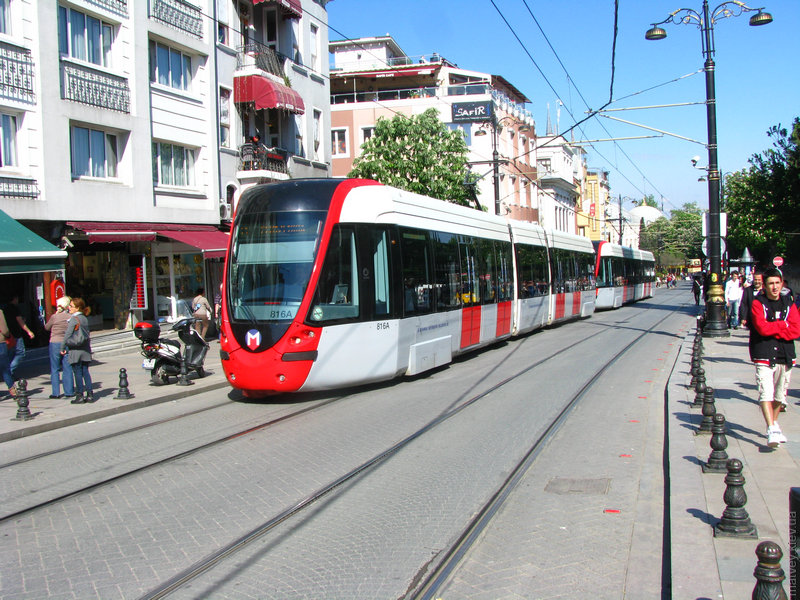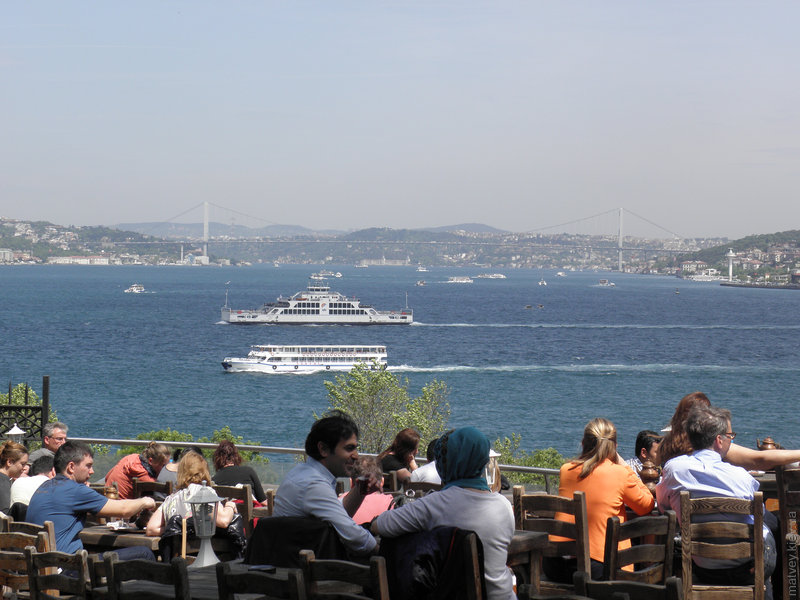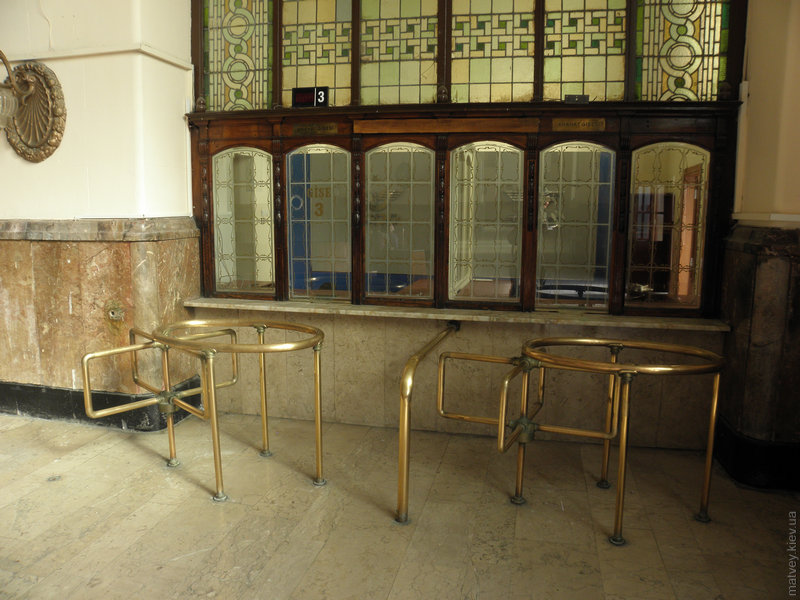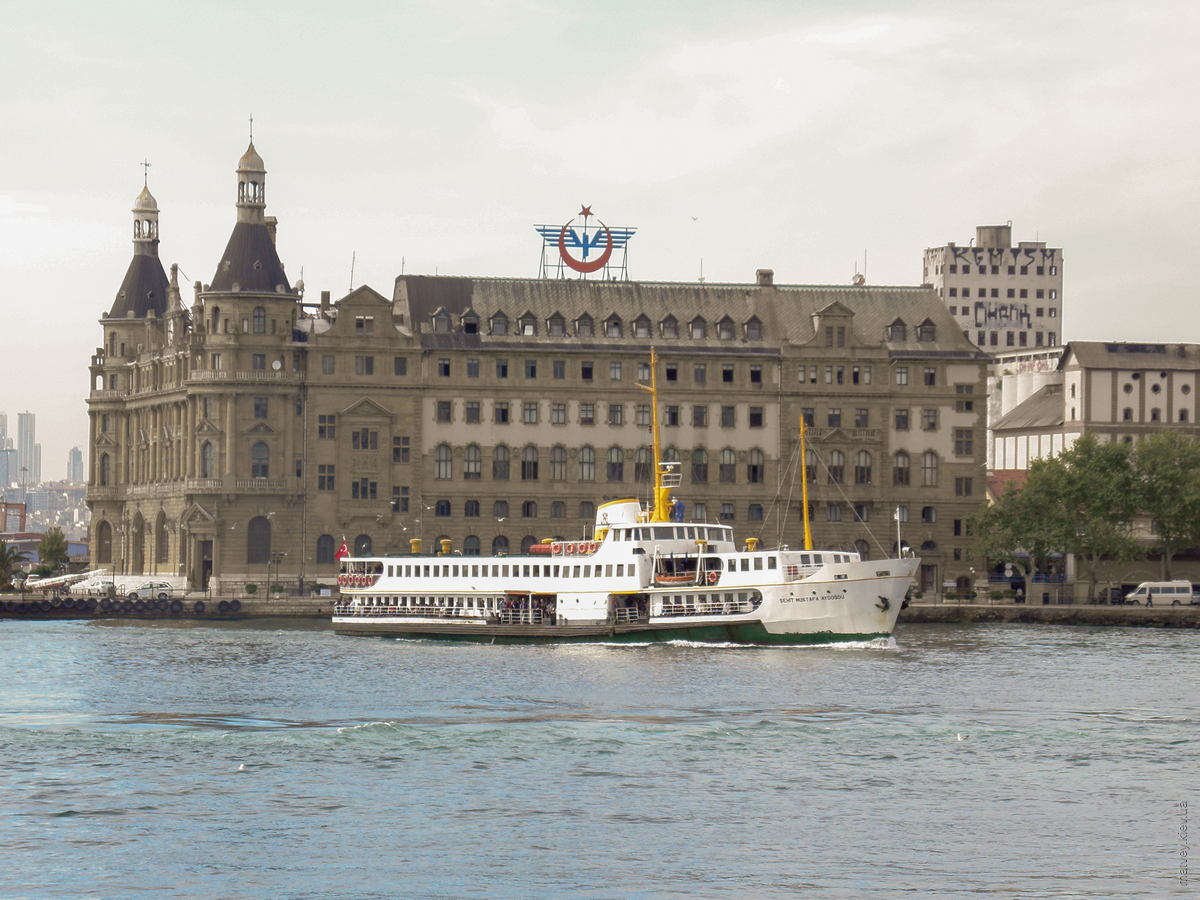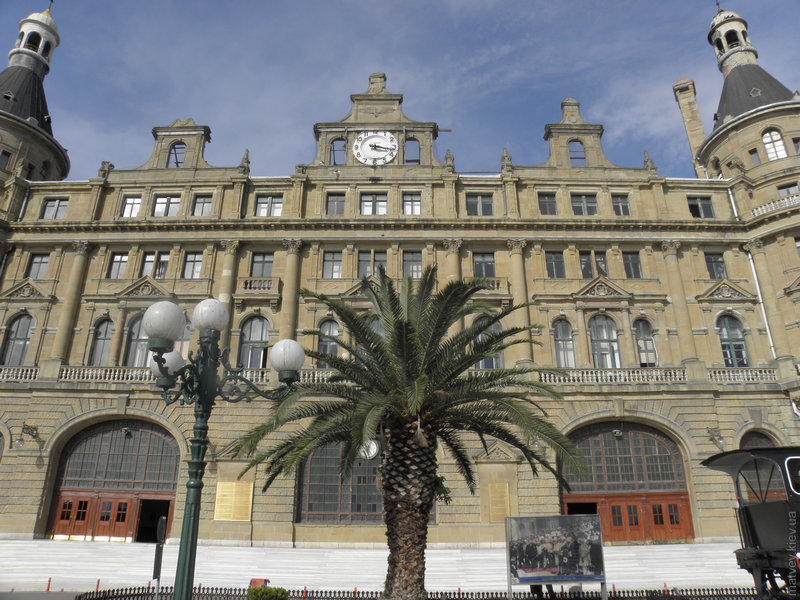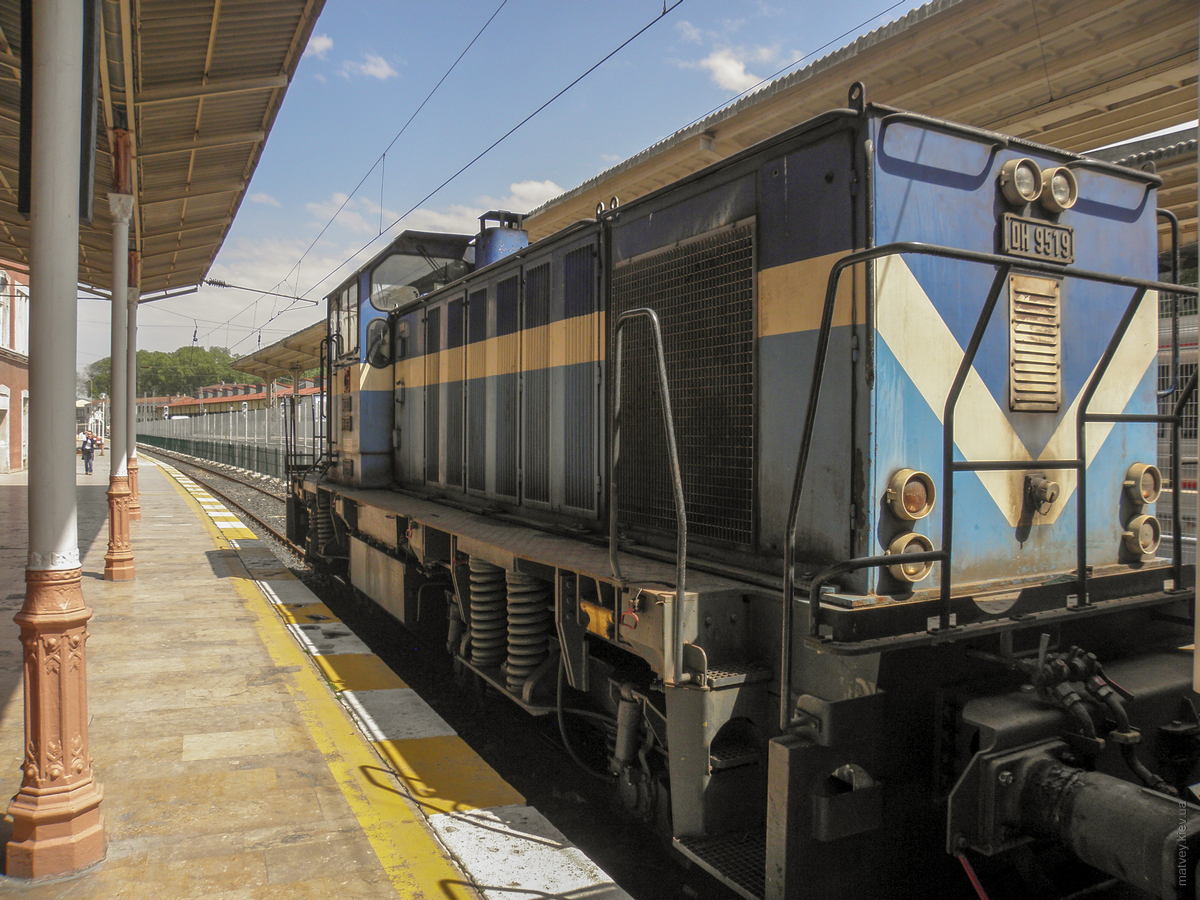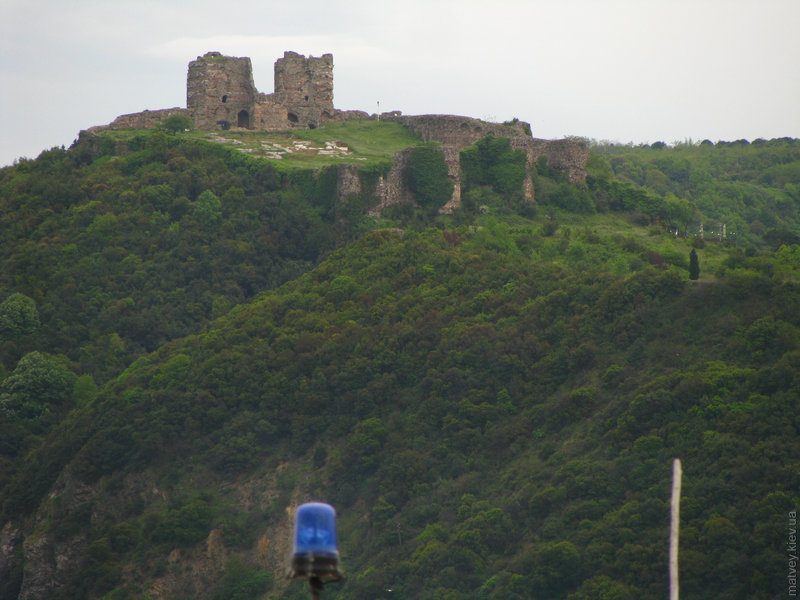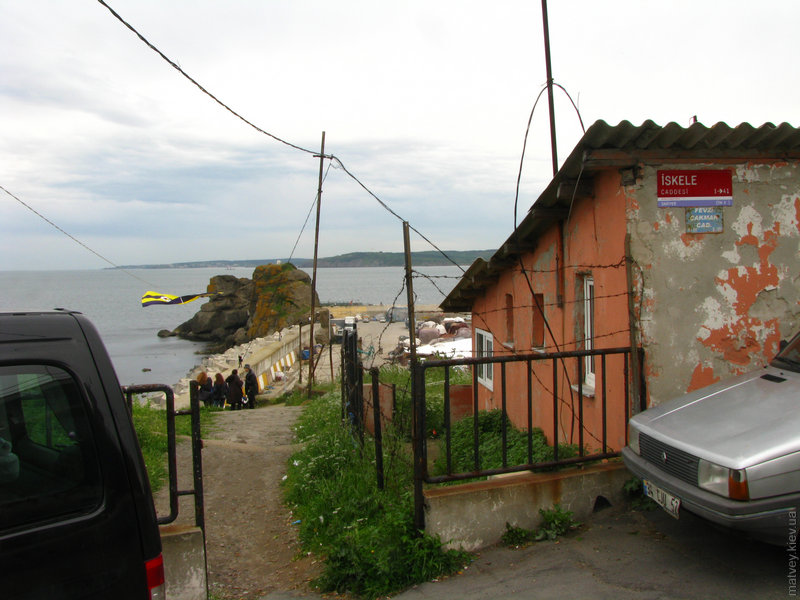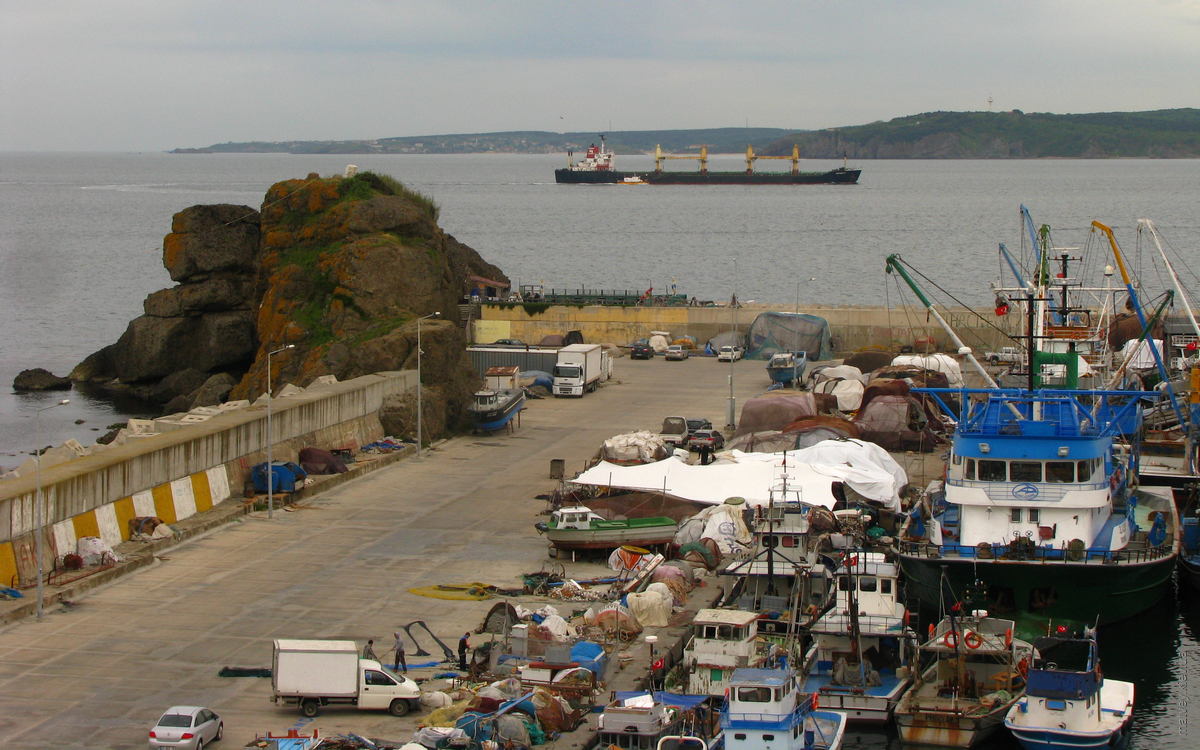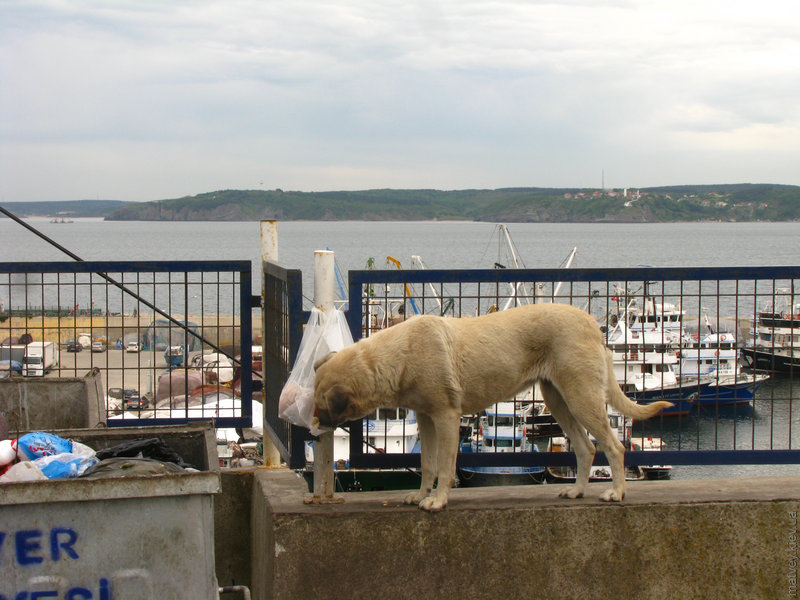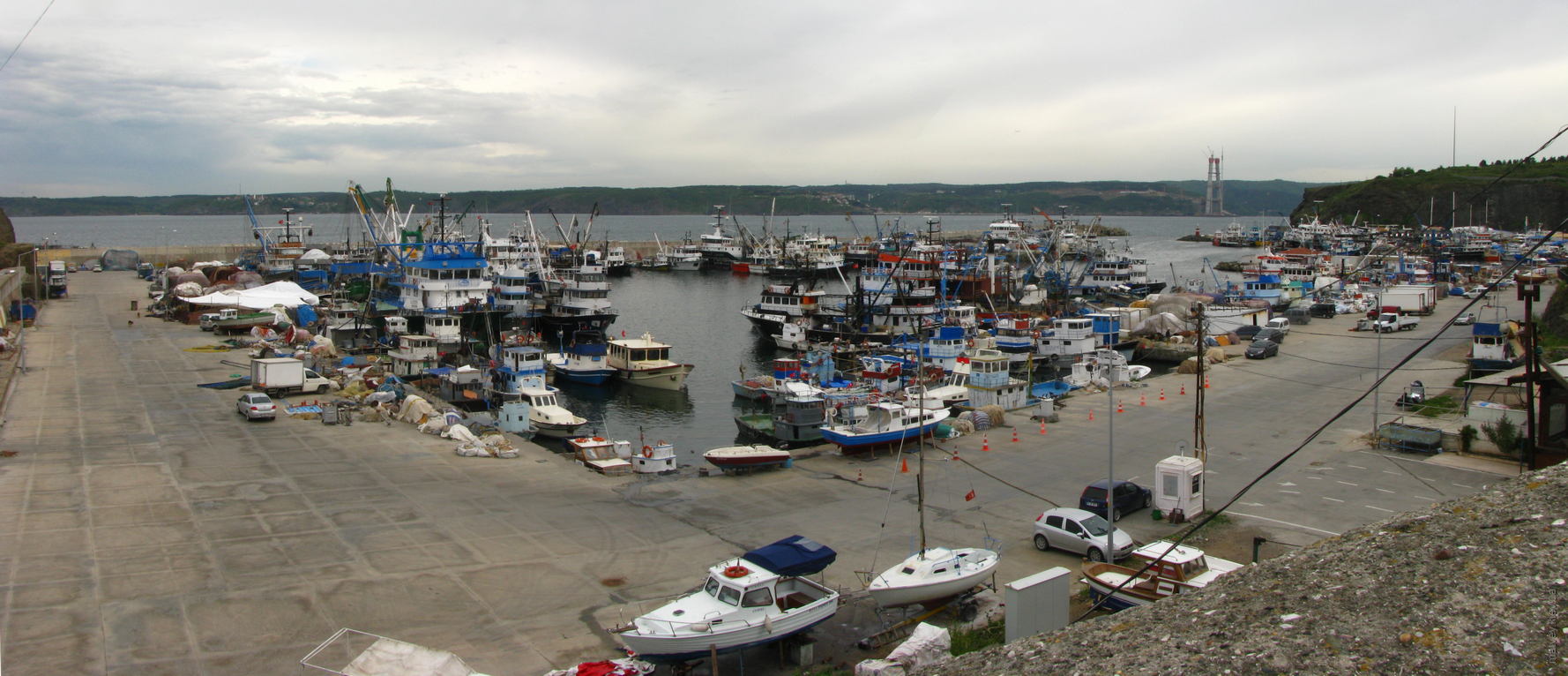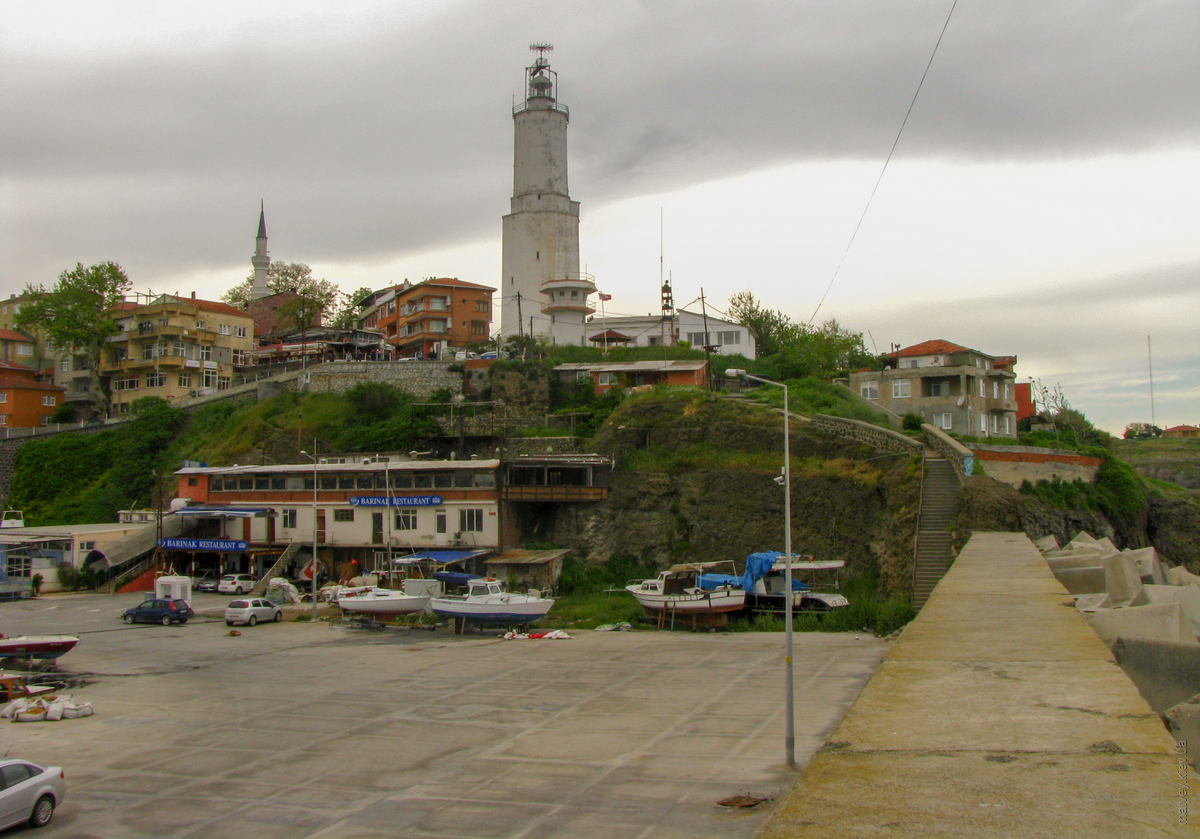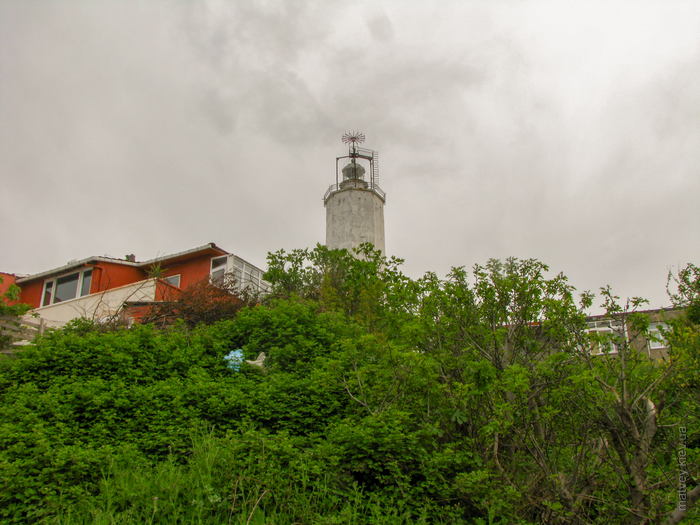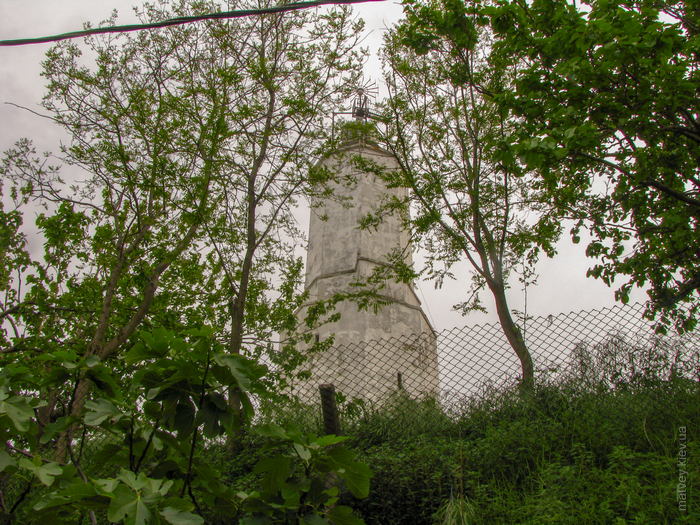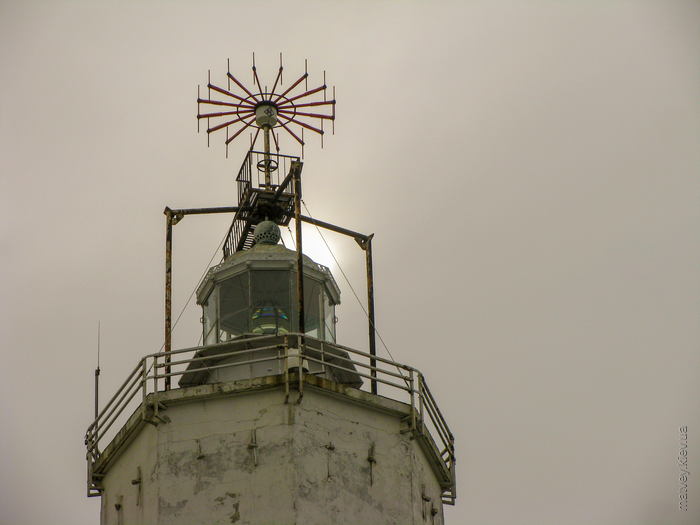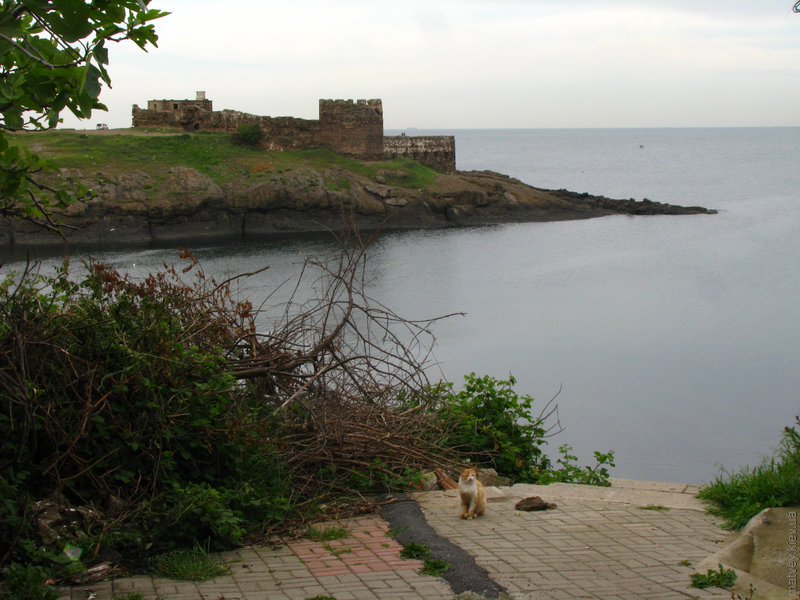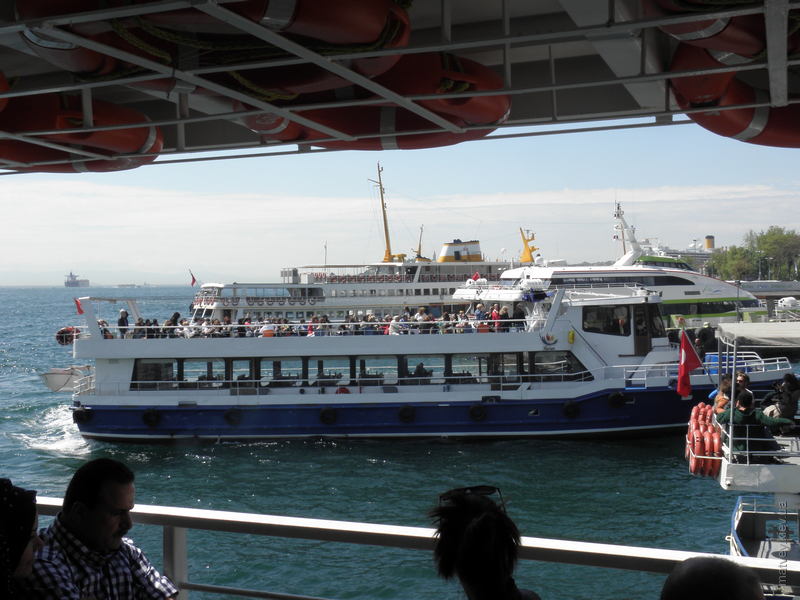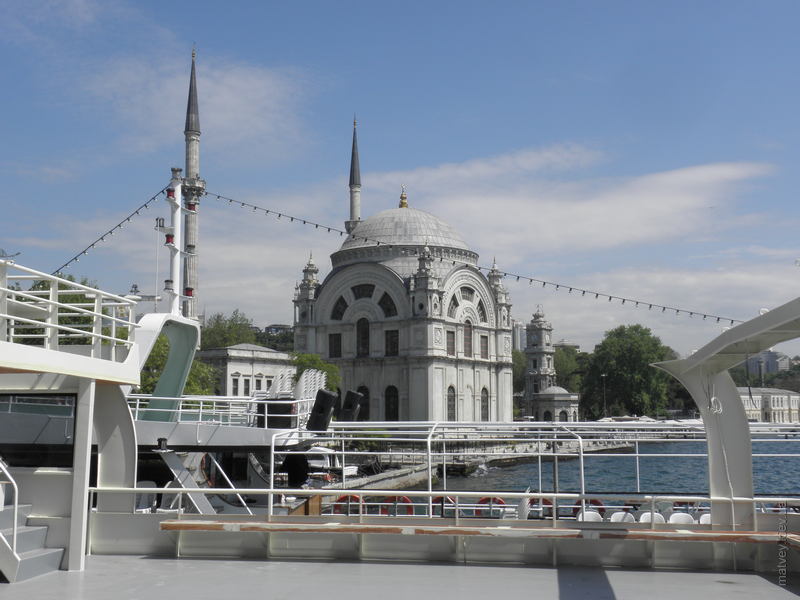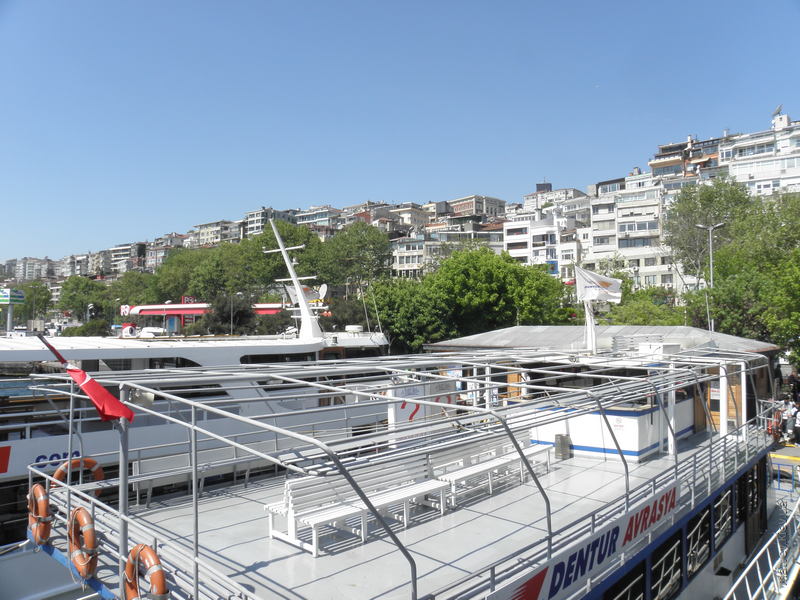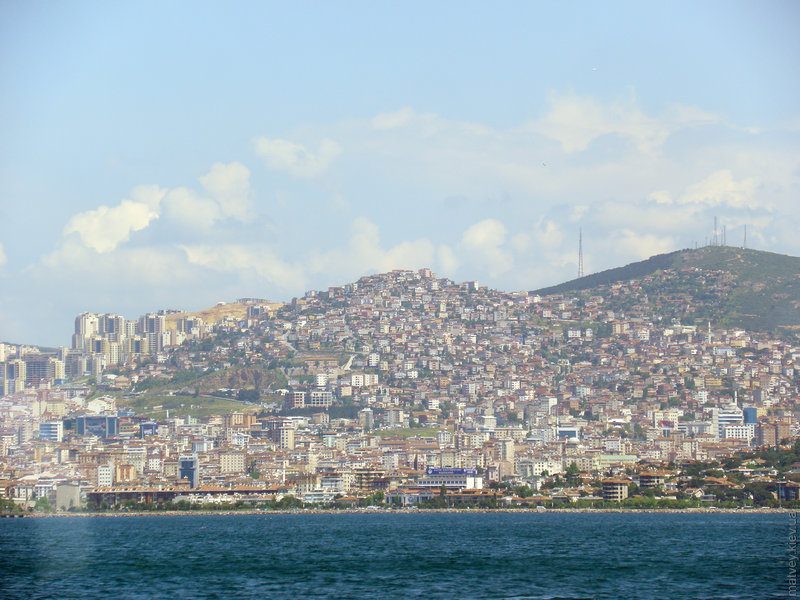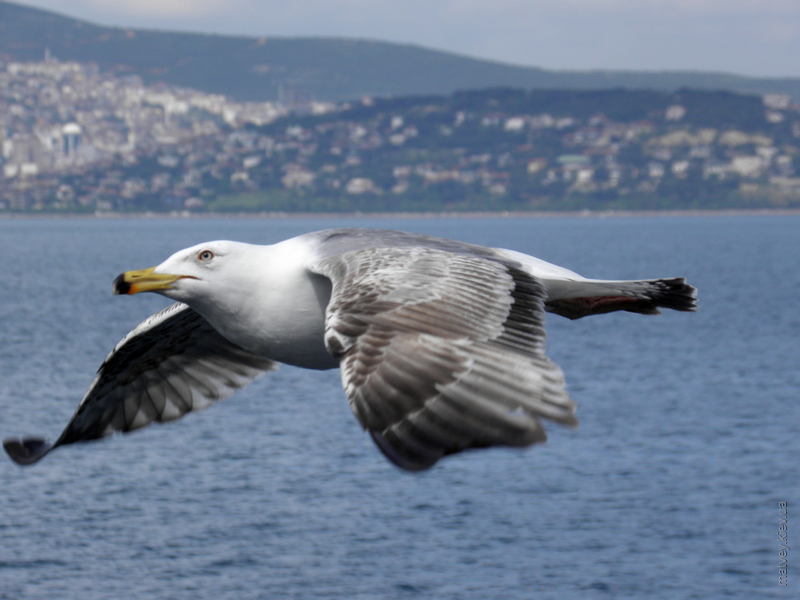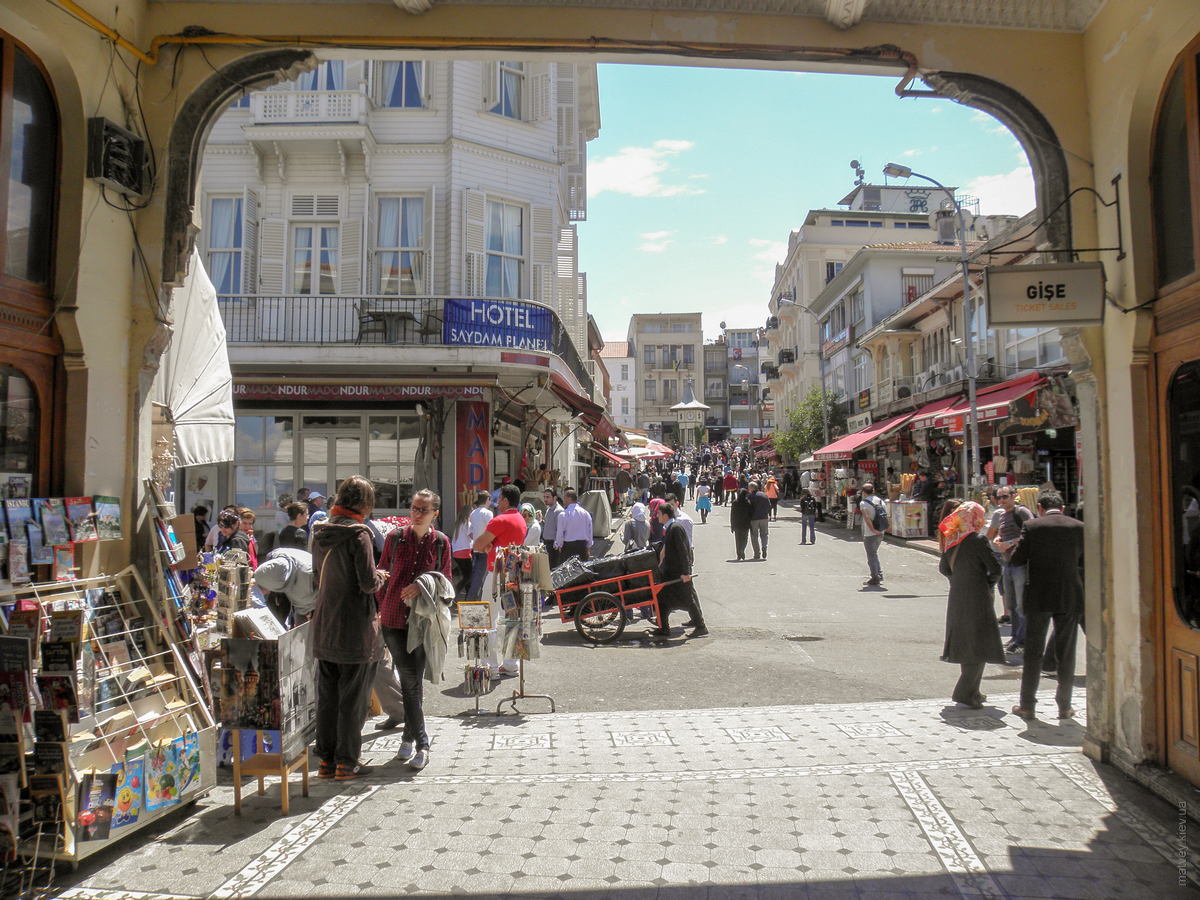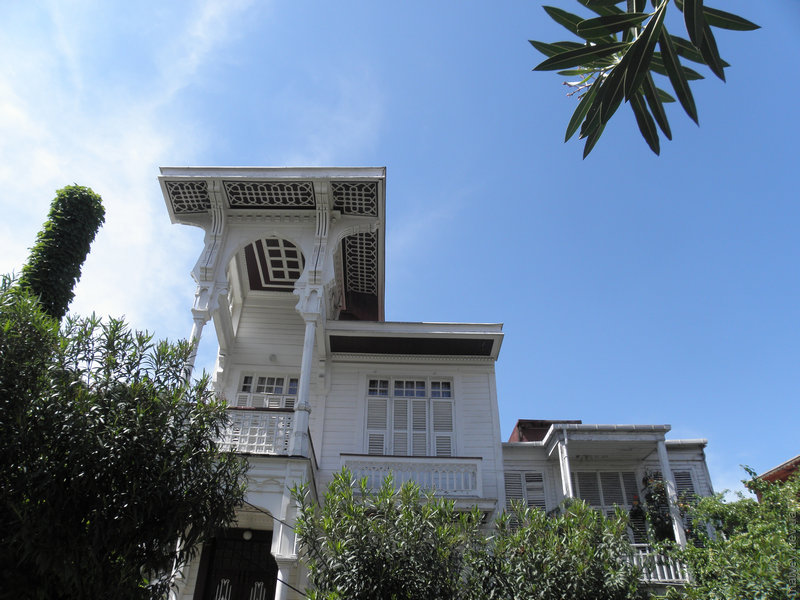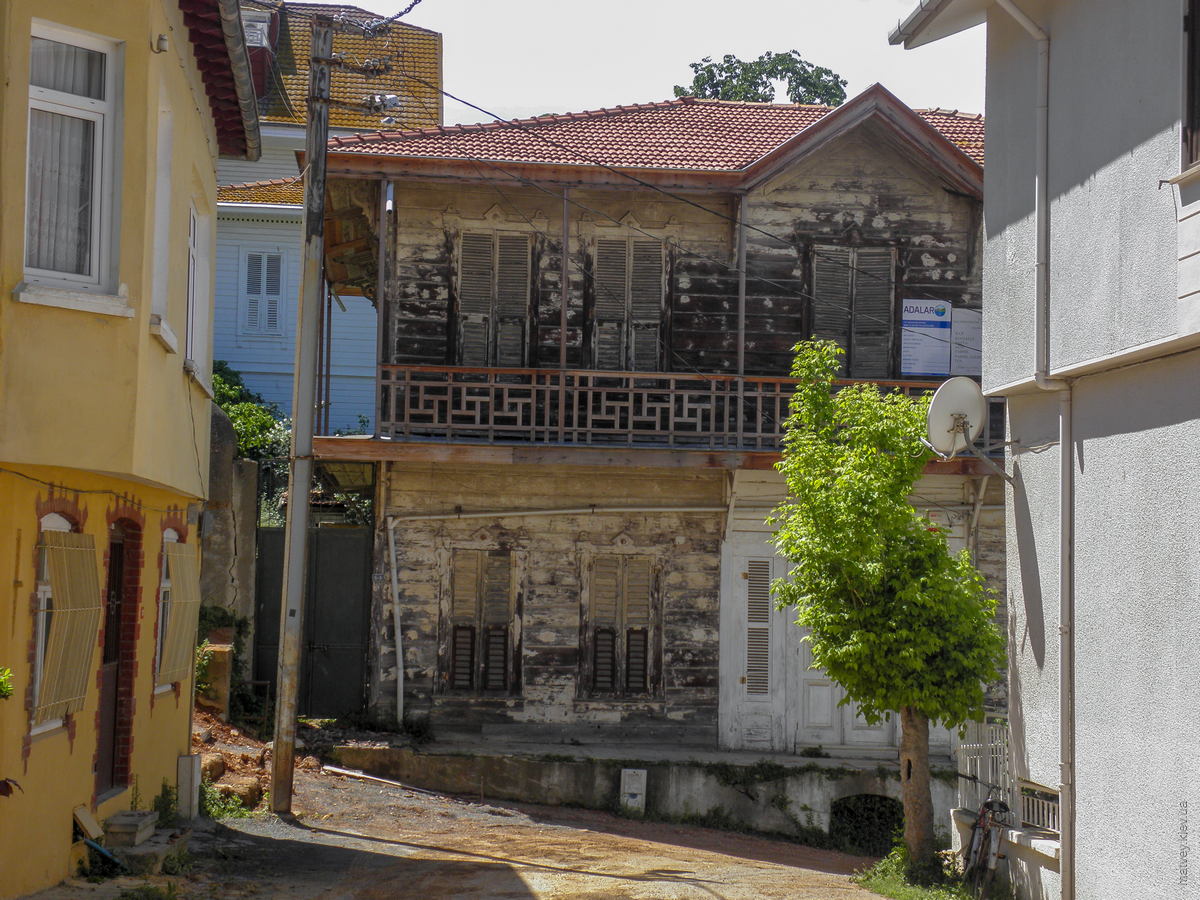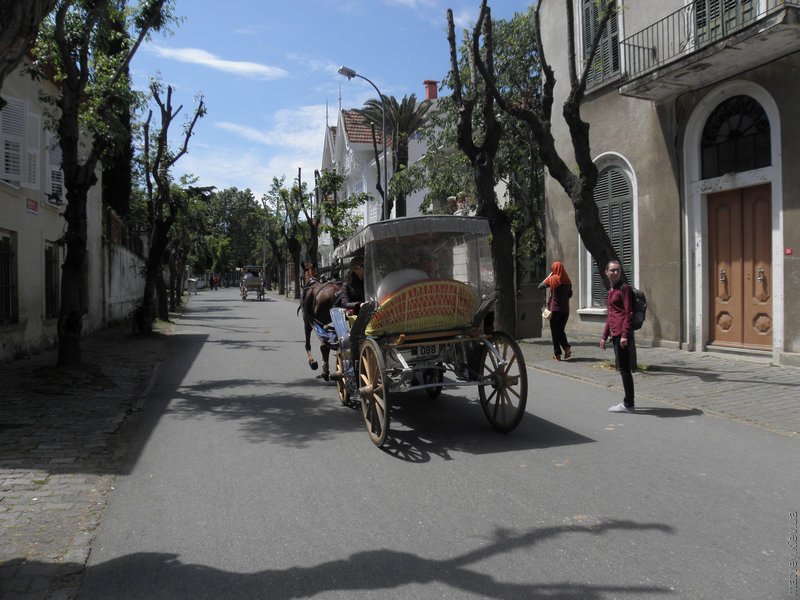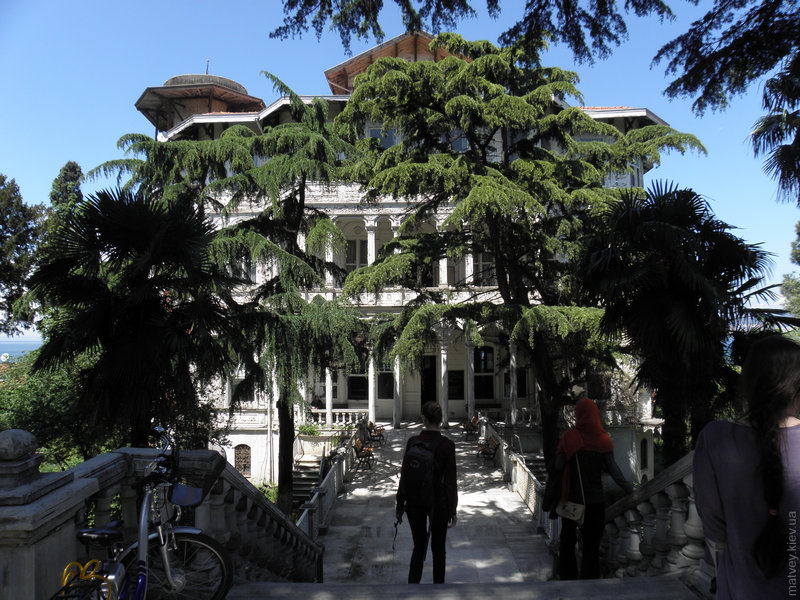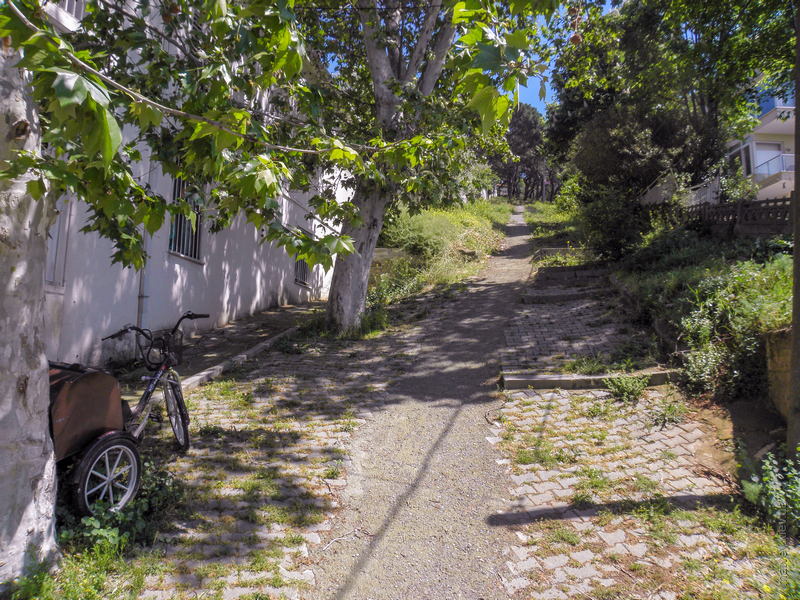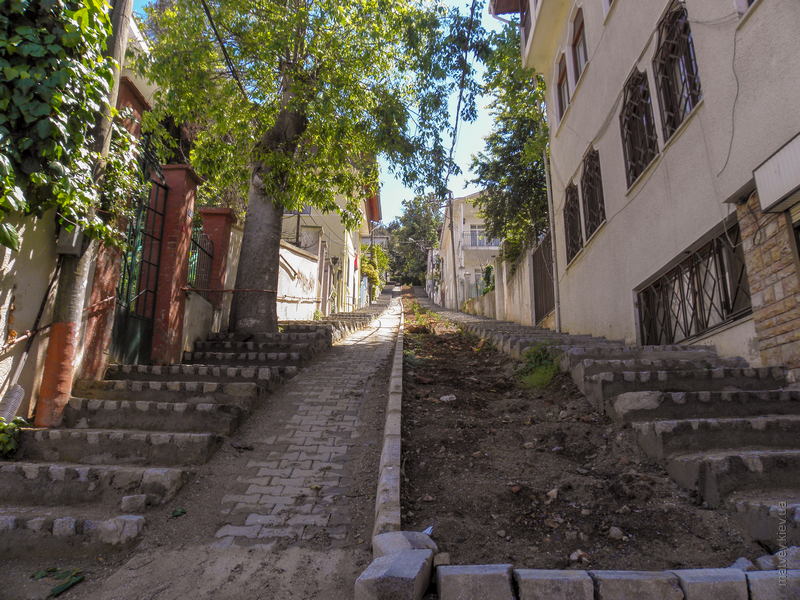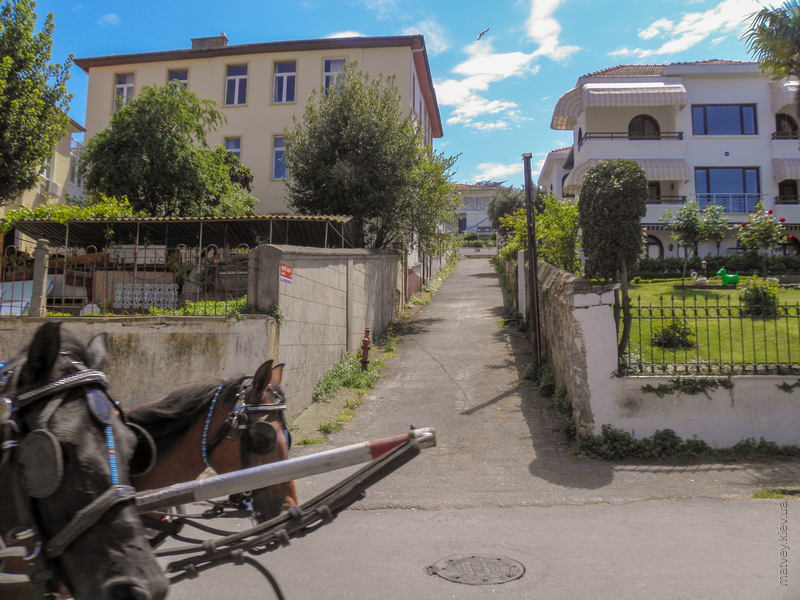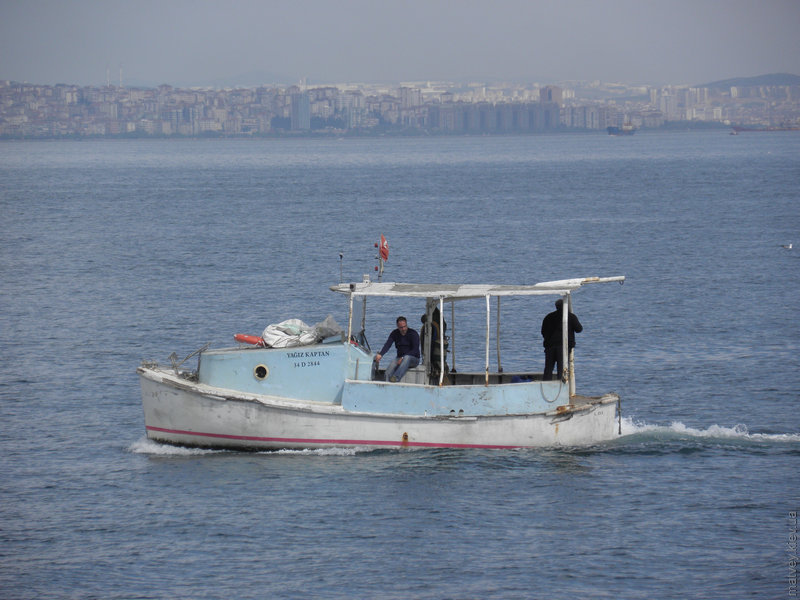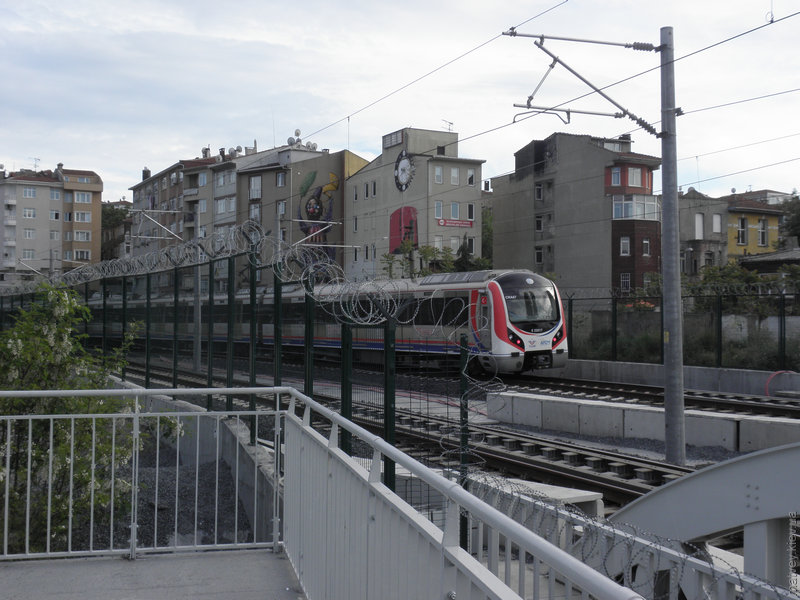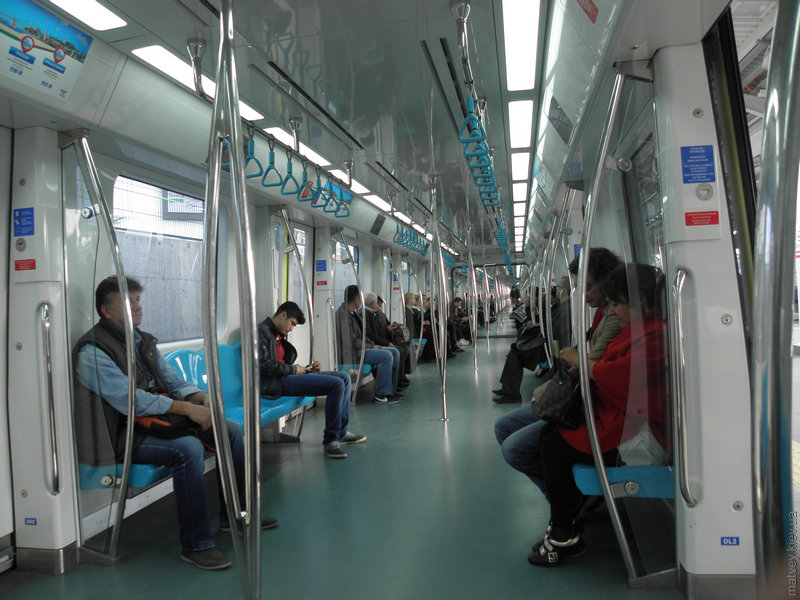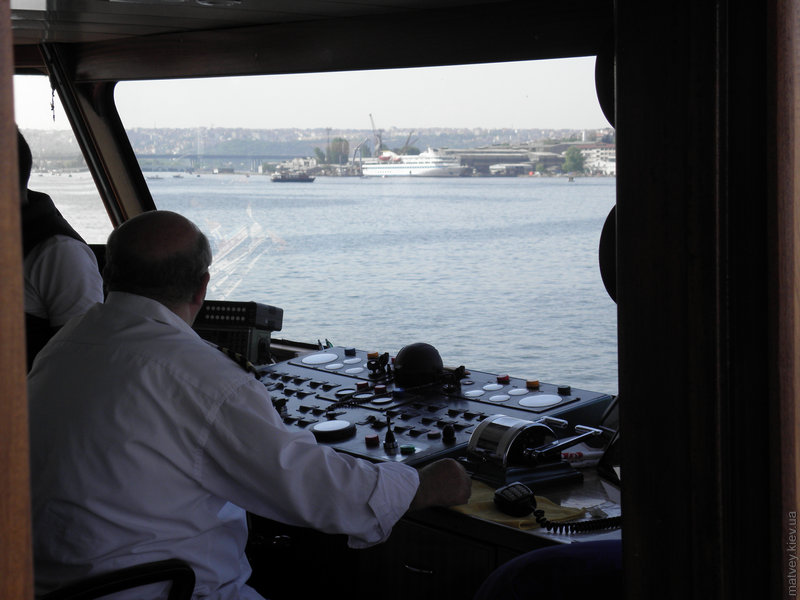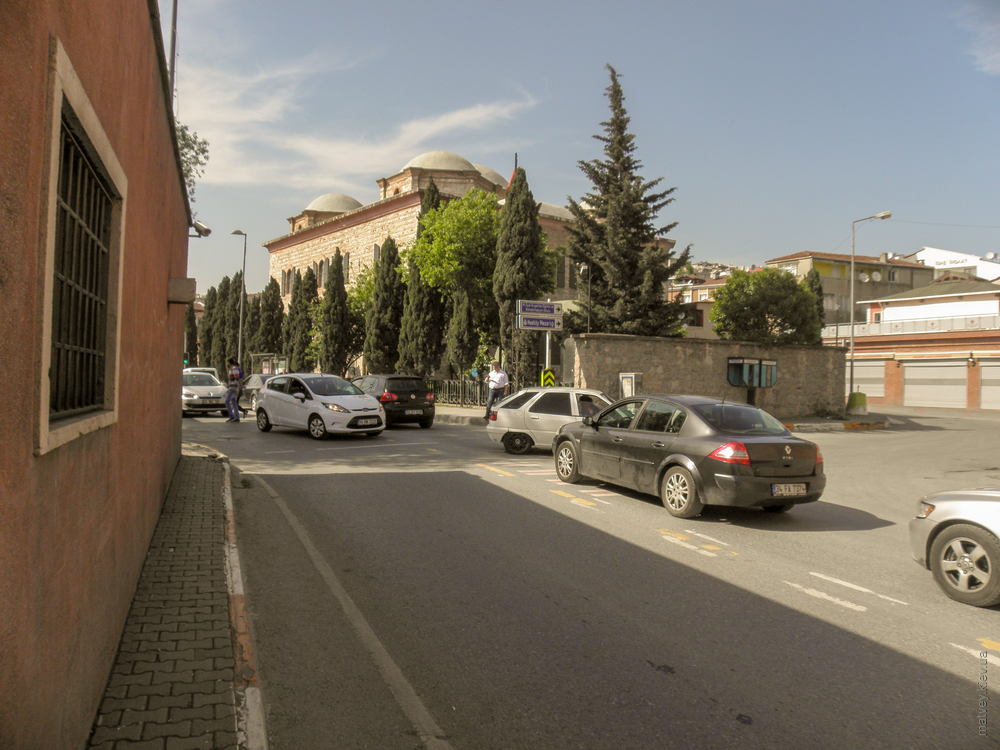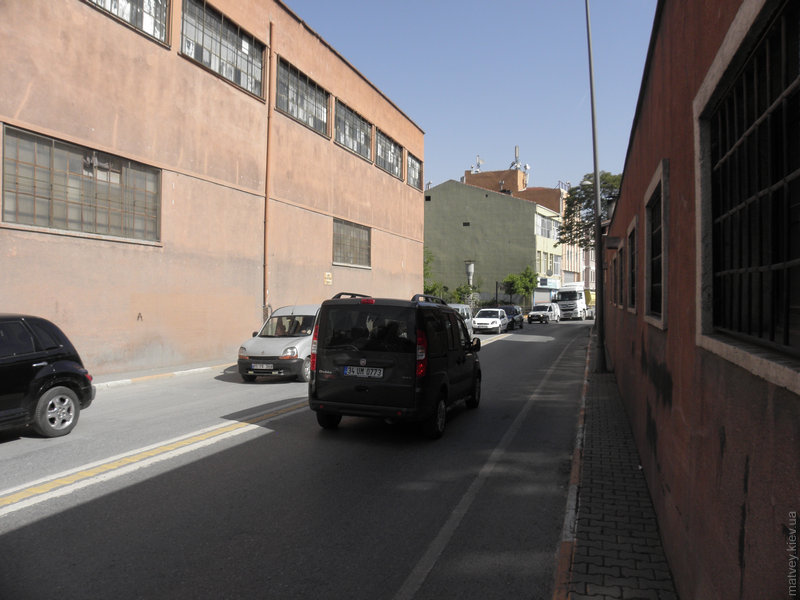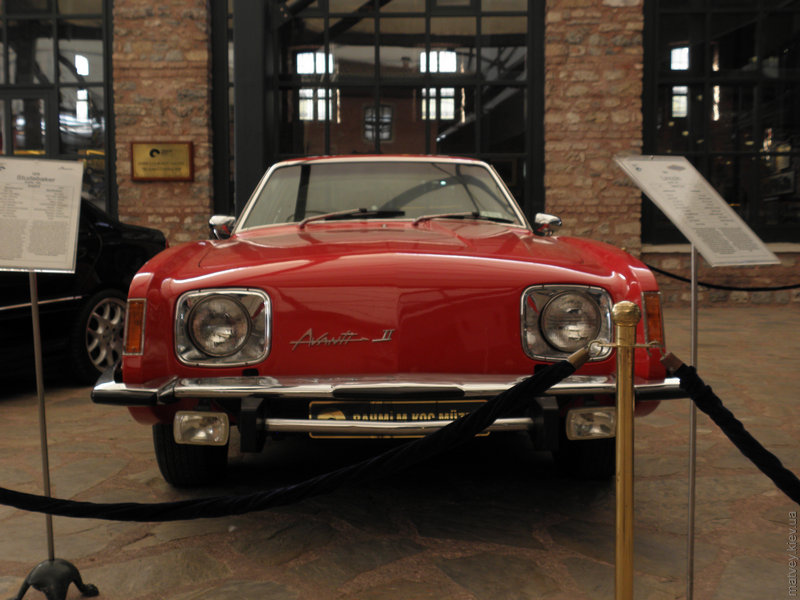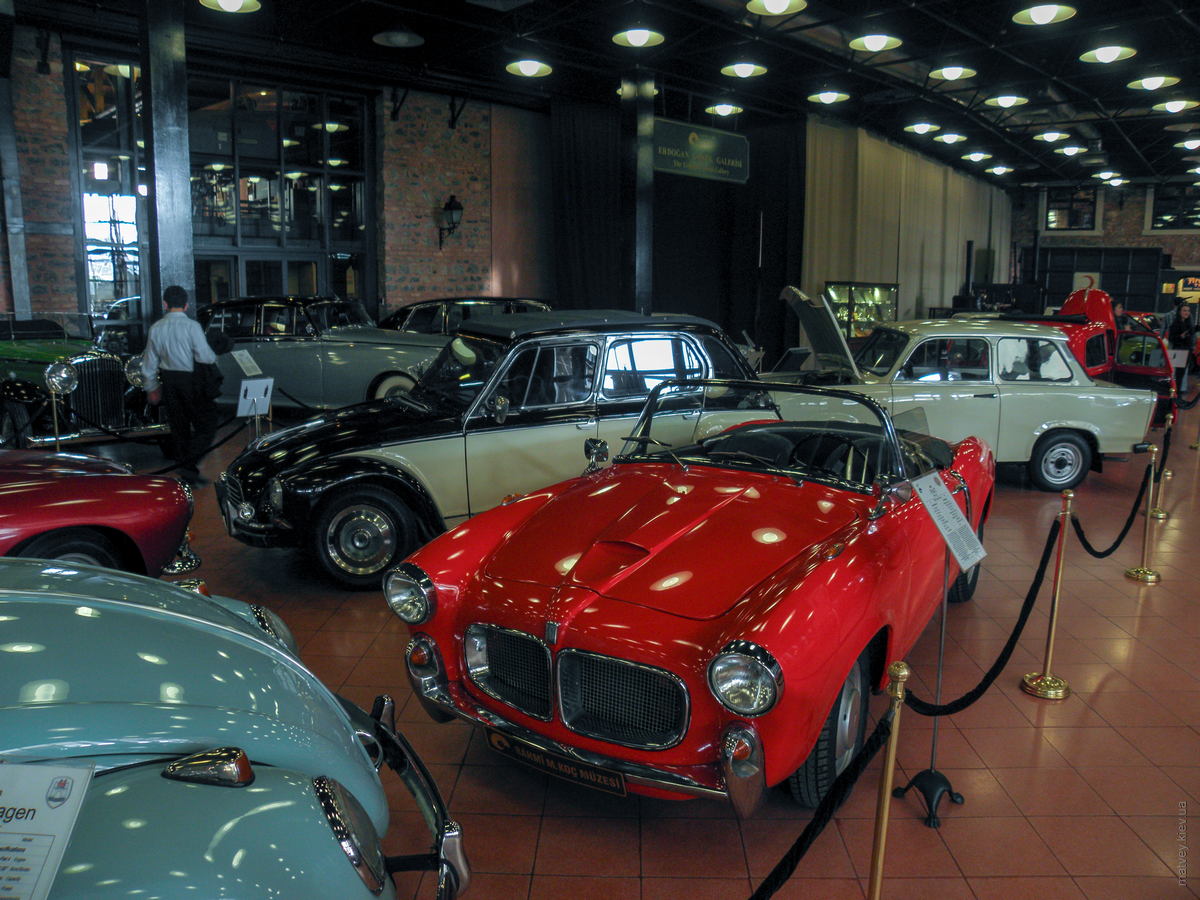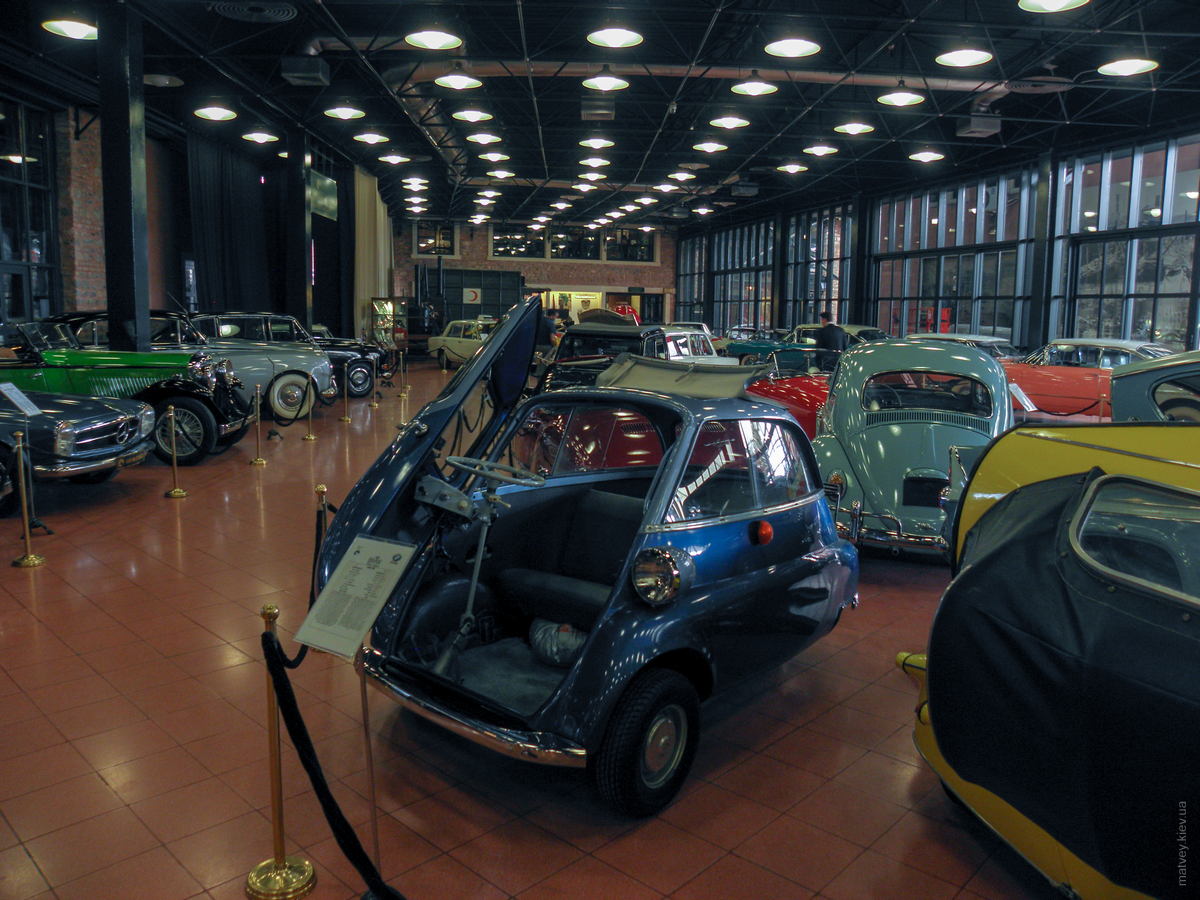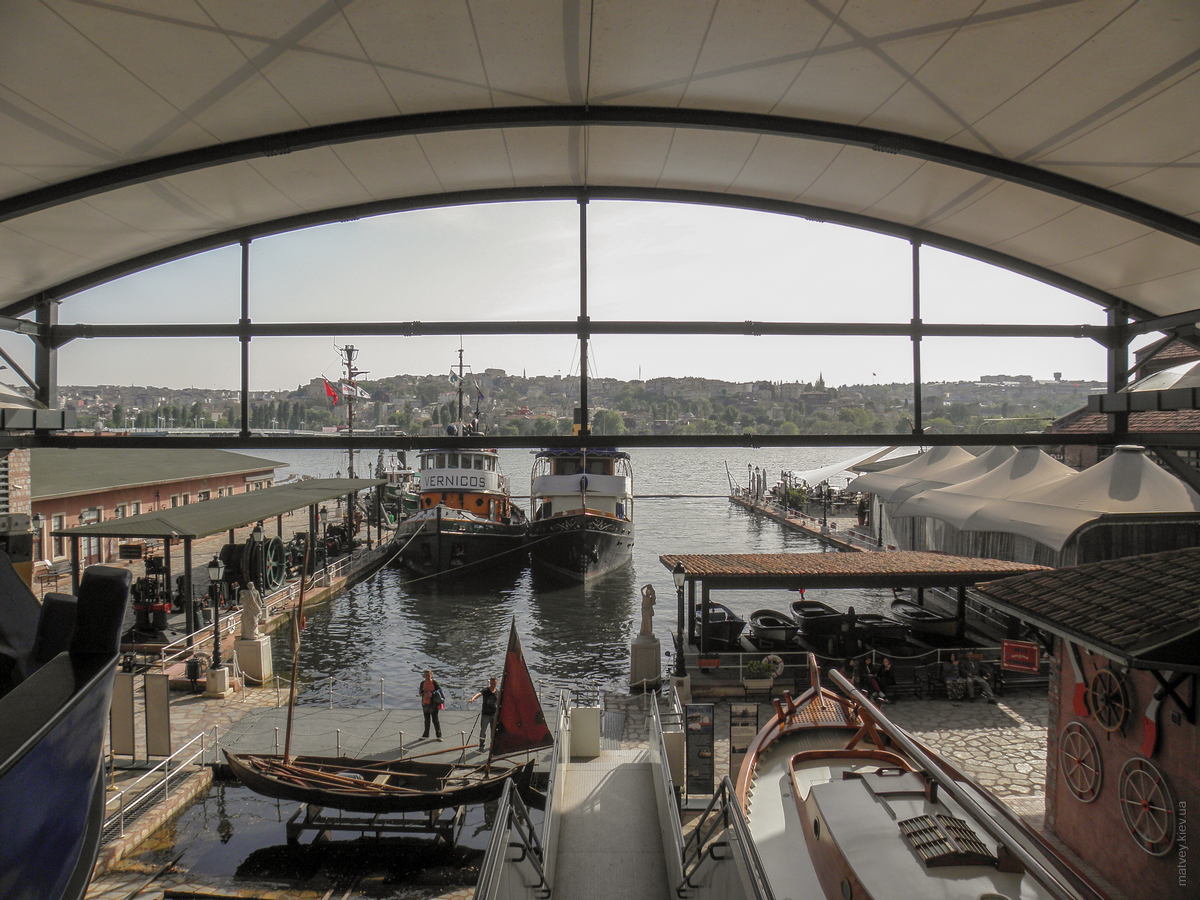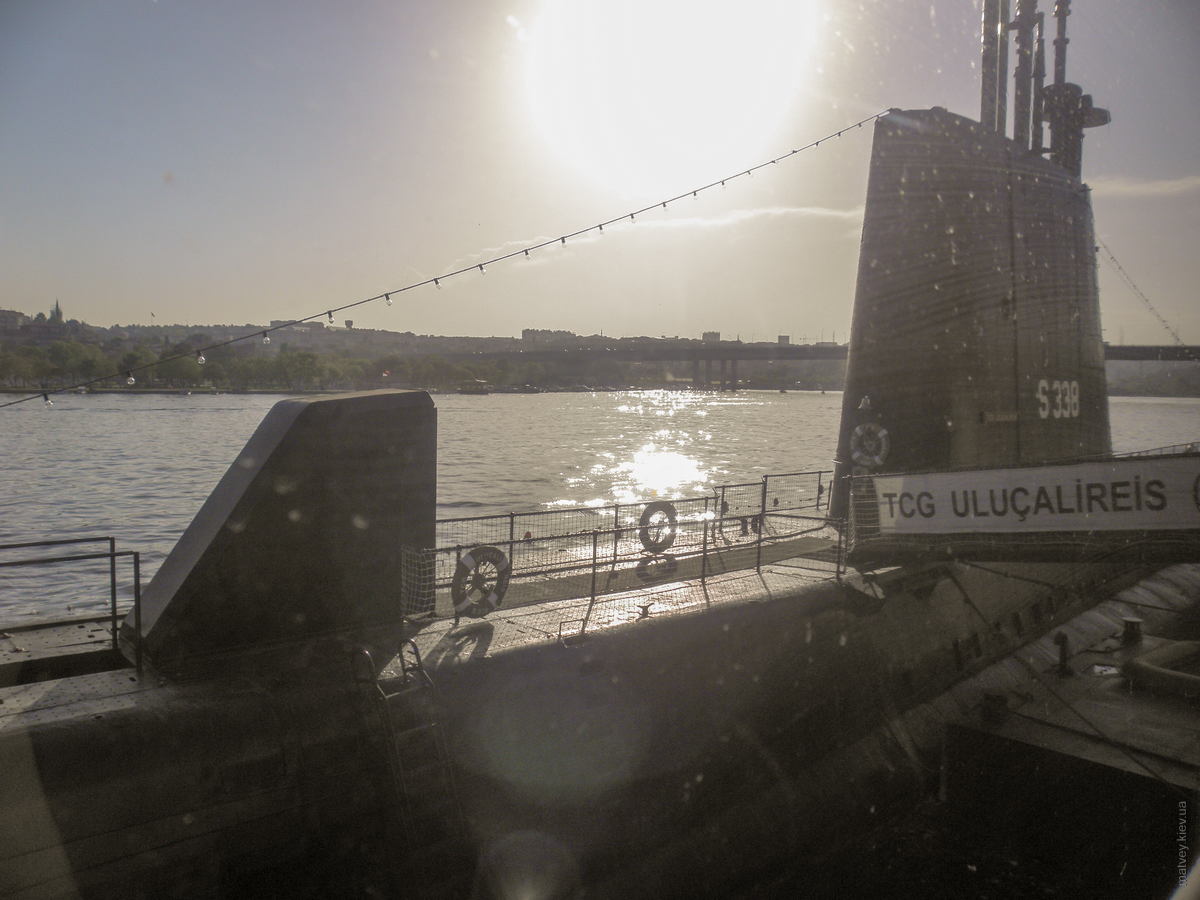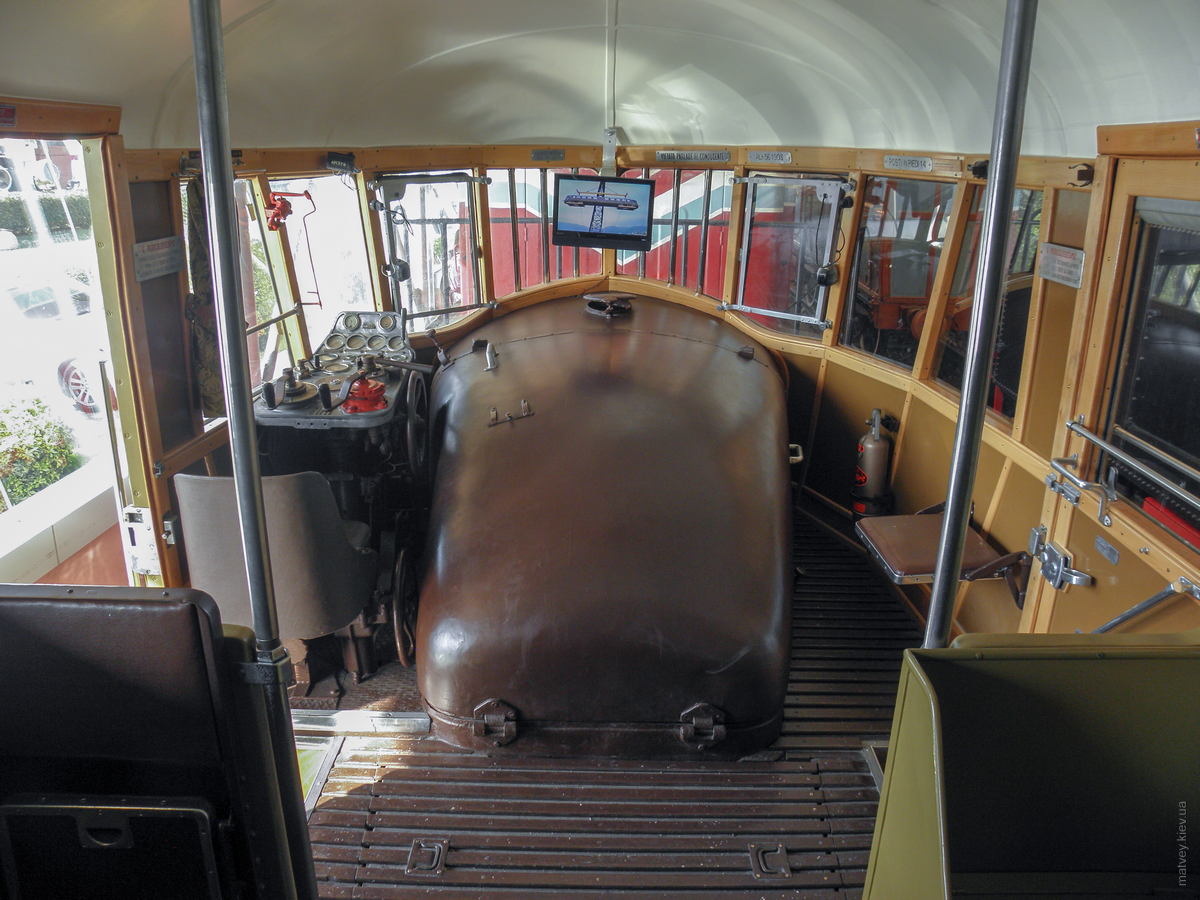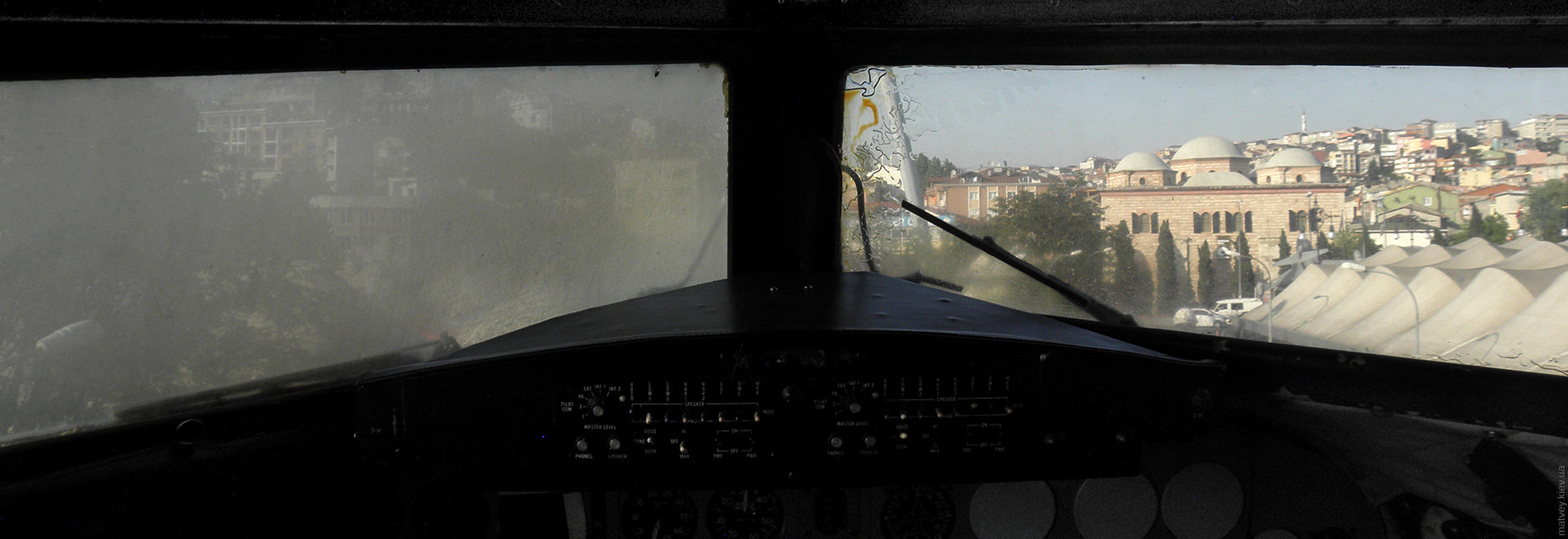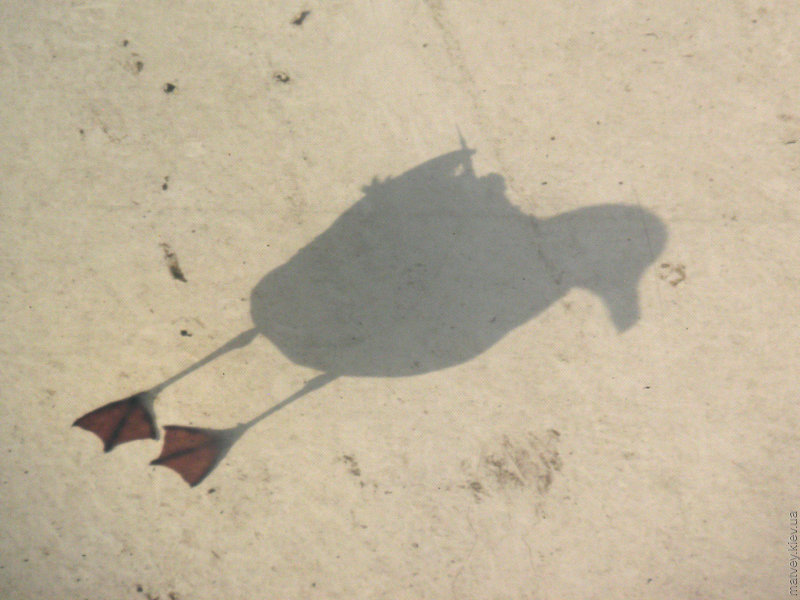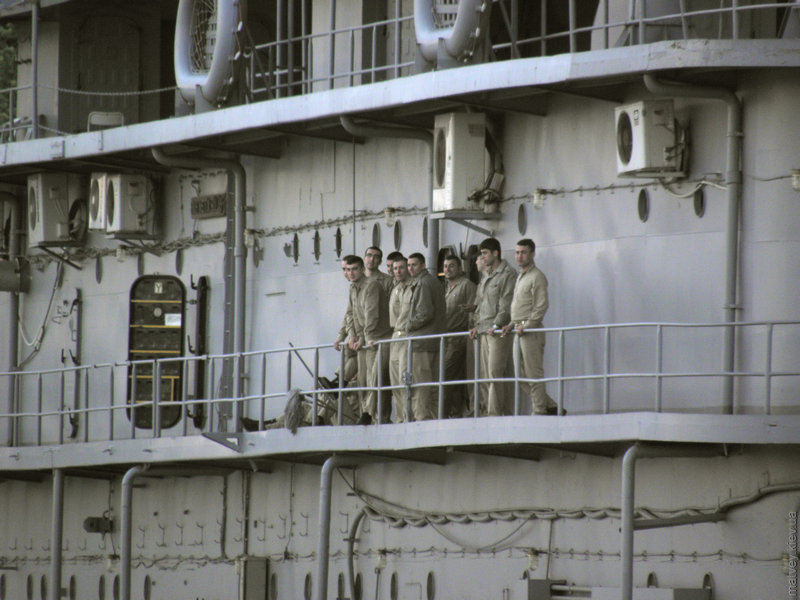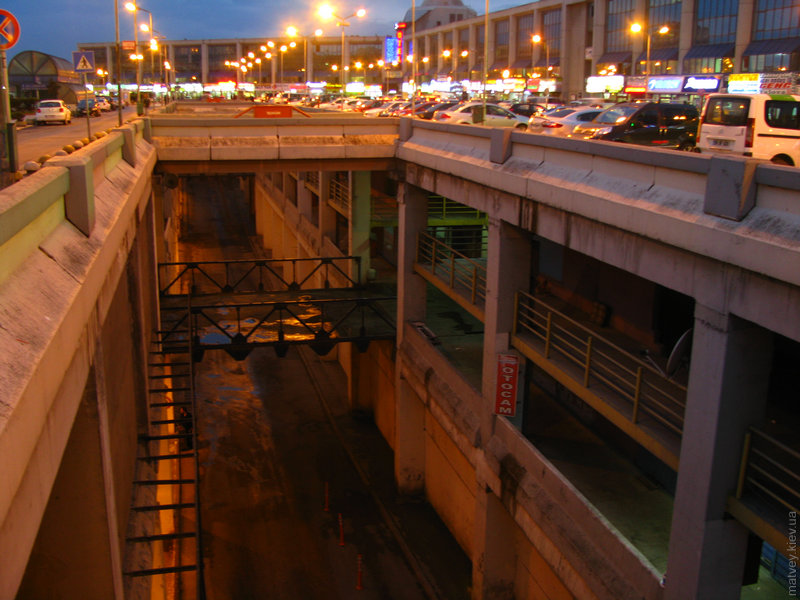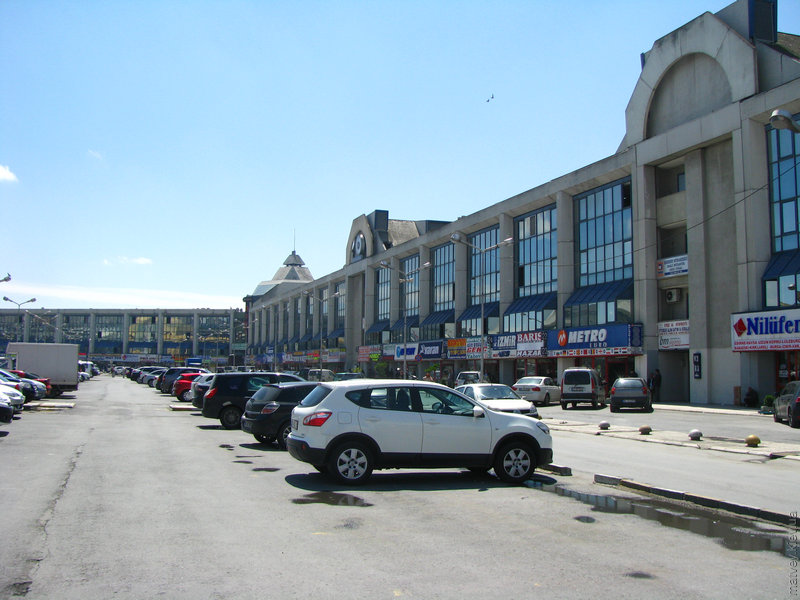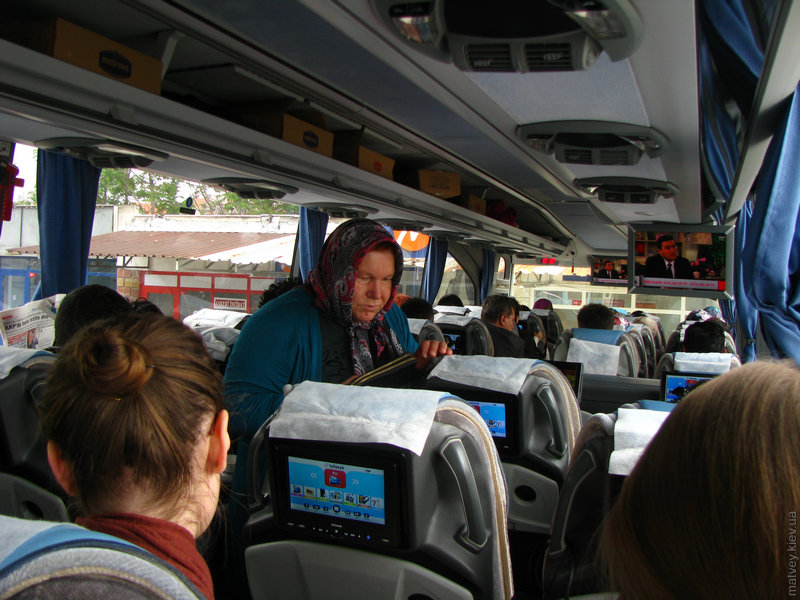Our touristic mission began in a place perhaps not common for this — the Machka-Tashkishla ropeway. It had the length of 400 meters, and had four cabins. The Turkish word for «ropeway» — teleferik — was loaned from the French via transcription. The French took it from the British, who constructed it from two Greek words. Interestingly, it turned out that Turkish language has a lot of such loanwords. It is actually helpful for a romano-germanic speaker who tries to learn a bit of Turkish!
A couple of photos of Maçka park below. One is a direct photo, and the other was made through a cabin's dirty window.
There were so many tourists in the city, that their matter would have been enough for the third Bosphorus bridge. I would have made a nice brick, too; in such case, please put me somewhere high — for better views.
The Istiklal street was not interesting to me, but the tourists were thoughtlessly walking as a thick crowd.
Maybe it was the smell of güzelme attracting the crowd? If so, then it is in no way possible that this lady could match such a demand.
The Taksim square was simply... gray. The skies did not help that day. There was nothing to do here, but it is an obligatory tourist destination.
This was a paid charging station for the phones. «Şarj» and «istasyon» both being loanwords. Read the words to yourself, listen to their sound and let the subconsciousness translate this from English or French. I did not use it because I did not have a single Turkish coin on me and because I had a powerbank.
The Tunnel — its name being a loanword from the language of Rimbaud — is one of famous tourist's destinations of the almighty Istanbul, and it was on our list, too. It was moving for around two minutes, and had just two stops: on its upper and lower ends.
We were brought to a place on the Ortaköy quay not far from the bridge. There were a long row of kiosks selling kumpirs here. The kumpir turned out to be a large boiled or baked potato cut in halves and topped with one or several fillings of your choice — each being a dish on their own. The choice was spoiled for me by the mayonnaise in most of the fillings. People were selling kumpirs at a speed. There was a lot of clients — some sitting, others standing.
One could make a kumpir at home, with the simplest recipe resembling the ones sold here being a potato with a pile of olivier salad. The two blurry kumpirs on the following pic seem to have exactly the olivier base mass on them. More stuff on top can be present, increasing the cost.
It was a small quay here, nicely having almost no fences, and the kumpir eaters were chewing while the ships were traversing one of the most well-known bottlenecks of global trade routes.
Vessel id: Ocean Dream (IMO: 8904757)
The queues to main tourist destinations
It was only the exterior of the Hağya Sofia that I saw, because the queue was so damn big that it could be bigger than the legendary queues of the USSR. I have never been standing in a queue of such length, and I backed off. Anyway — I haven't seen anything here, every dirty lane was as new to me as the insides of the Sofia.
♿ People with special needs can skip the queue and the ticket price. A document about the status is needed, and it can be from any country of the world.
The places next in the popularity rating were having queues of inacceptable lengths, too. I didn't go into the Top Kapı, as well as the Cisterne or the Dolmabahçe mosque. These people chose to stand, I chose to walk.
I did go into the Blue mosque which was right here in the same place, called Sultanahmet mosque by the turks. There were no queues here despite this building definitely not being your closest boxy convenience store. It has some similarities with the Selimiye mosque in Edirne. Some people were setting up their filming equipment in the center of the main hall at the time of our visit.
The water fountain for ablution and a thick mat serving as the door to the main hall.
One street was passing simply through a thing that we were used to see only in history books. A real ancient aqueduct.
Istanbul has subway. I used it.
It also has trams. The T1 route was probably made with the tourists in mind, because it passed by many famous places.
A view from the Gülhane park («Gülhane» means «a rose house»). Both the Bosphorus strait and the Marmara sea could be seen from here. We did not eat here — it was somewhat above our level of financial freedom.
The train stations were open, free to enter and take photos, but no trains were operating. Here's the empty ticket desk inside the empty Haydarpaşa:
A serious building near Kadiköy, Haydarpaşa was standing on a pier, open for almost us only. Who could these strange people visiting train stations instead of cafes be?
Haydarpaşa building looks like the letter «П» from above. The upper bar has the main entrance ant the ticket desk hall. Side legs host various offices, not sure of what kind. The trains were supposed to be arriving to and leaving from the middle of that letter, where dead end railway spurs were.
The Sirkeci train station on the other side of the strait was not operational, too. The rails were not under maintenance, however. I did not understand the weak hype around the Orient Express topic, but this was the reason why people (except me) came here to take photos. The entry and photos were free, too. Not many people were inside, but a bit more than inside Haydarpaşa.
There was a modern passenger train car standing at the platform, free to enter and take selfies in the seats. Nothing interesting inside except the fact that it was open for uncontrolled visits, and it was clean inside. A locomotive was standing nearby, detached from that car.
Maps were saying this was one of the edges of Istanbul. This place on the european shores of the Bosphorus was a calm one after the big city. It was quiet and full of small fishing boats. The Yavuz Sultan Selim bridge construction was undergoing in three kilometers further to the north.
The village on the opposite, asian shore is called Anadolu Kavağı, and the Yoros castle was standing over it on the hills.
In case you didn't know — «rumeli» means the european side and «anadolu» means the whole peninsula housing the asian part of Turkey, with «
Rumelia» and «
Anatolia» (wiki) being their English equivalent.
Ten more kilometers to the north and we reached this village outside the city border but not outside its influence. The title of this calm village obviously meant «the Rumelian lighthouse», and some tourists are attracted here because of the Black Sea meeting the Bosphorus strait here.
This local dog was already fed up with that view.
Okay, here is a proper, not canine-obstructed view of the port.
The Rumelian lighthouse was towering over everything here.
Rumelifeneri also had ruins of a fortress. These are abundant in Turkey.
We paid for the tickets and boarded a steamboat bound for Büyükada. The travel took a bit more than one hour. The Adalar ferryboats are a good place from where to estimate the size of Istanbul, which looked endless.
Here's the fully urbanized hill holding the Gülensu neighborhood of Maltepe district. The hilltop sits 318 meters above the sea, while the other hilltop having the radio towers has 389 meters. Istanbul is not flat!
The seagulls were accompanying all ferryboats all the way, awaiting food from the passengers. Some threw inedible objects to them in order to make a better photo with their two feet long camera lens.
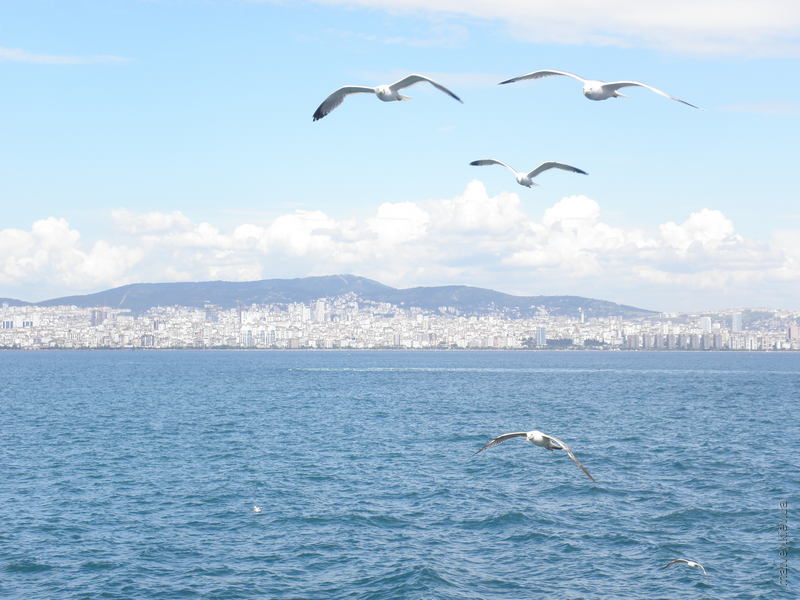 Seagulls
Seagulls
and
Aydos
hill
(537 m)We landed on the Büyükada (which means «big island» in Turkish), and walked for a couple of hours. Life was noticeable near the pier.
But we went further and it started to seem that houses were empty, and the streets were being used by tourists only.
No cars were allowed on Büyükada except police and municipal services such as waste trucks. The traffic consisted of horse carts for some tourists who like that sort of thing and a few bicycles. A consequence of horse traffic was the smell of their feces.
The local tax inspection office was definitely looking like a tax heaven or an offshore.
One side of the island had the endless view of Istanbul. We did not visit the other side.
Our style of visit was not a proper one. We came for two hours and went back. Don't be us — take more time and hike the whole island perimeter and the tree-covered hilltops. It won't take more than one day.
I've got a few pics of steep streets and lanes going up to the hilltop.
Fishermen doing their calm job while the anatolian part of the megapolis is in a hurry.
Scratched the surface of this microdistrict. Here's a somewhat non-trivial street corner on the very edge of Kadiköy.
A train of the Marmaray line that we went to see.
Inside that same train.
Marmaray is famous for having a tunnel under the Bosphorus strait, and people like us try to ride this section especially for that reason. But the tunnel is a dark place, and we only saw the darkness behind the windows. That was expected, of course.
The museum of Rahmi M. Koç
We took a ferryboat from Eminönü to Hasköy. The captain had his doors open.
Went left from the Hasköy pier to find very narrow sidewalks. Let's do some arithmetics. The common width of this type of pavement tile is 20 cm, and there are three tiles side to side. Let's suppose the gaps are 2cm each. 4 gaps are affecting the width. That is 68 cm. Let's suppose the edge border is 10 cm wide. So, it was something around just 78 cm. Also loot at how the lantern pole blocked the sidewalk.
It was very soon that we reached the entrance to the museum of one of Turkey's rich men — Rahmi Koç. He had cars,
his several train locomotives, including this Fiat Littorina, that had a video about its installation into the museum inside its cabin,
He also had old bilycles, buses and other stuff. It was here in this museum that I found something cheaper than one lira — it was an ice cream for 75 kurushes.
Part of the territory was covered by a translucent material, which produced funny seagull silhouettes.
A ferryboat back to Eminönü passed some military vessel with these soldiers.
Traffic jams are hard in Istanbul.
Buses were actively operating, in contrast to the two old train stations. Istanbul's bus station («otogar» being another loanword from French) was a layered concrete monster.
It was a rectangle. Its outer sides had bus platforms, while there were many ticket offices on the inside. The ticket desks had entrances on both sides, so that a passenger could come from the inside, get a ticket and exit to the platform.
There were many different companies instead of one central bus operator. The richer the company, the more ticket offices it had. The leader of them all was called «Metro».
The area inside that rectangle was made for taxi and pedestrians. There is a metro station in the center.
Passengers were offered water or juice, and cookies in buses of bigger companies. At no extra fee — it was included in the price. Backrests had screens in them, looking like Android tablets. They were all working badly. The best thing that I met was the live video stream from the dashcam. Here's the HGS system for automatic charging for using the toll road.
These screens had headphones, but I was unlucky and mine were all broken. I saw other people using headphones, so maybe they had more luck. Every bus had different hardware, software and contents of these screens.
Bear in mind that tickets can get sold out in peak days. Buy ahead whenever possible. We almost got screwed once in such a situation on a Sunday evening. There were no tickets available, and we were saved by my sister who knew Turkish and overheard that someone was gathering passengers into an unofficial bus with prices increased by a factor of 1.5.
